

Subscribe to Our Blog
Stay up to date with the latest marketing, sales, and service tips.
What Is the Buyer's Journey? 18 Questions You Need to Ask (+ Template)

Douglas Phillips | November 21, 2023 | Buyers Journey | 10 min read
Quick Links
- 1. What Is It?
- 2. Stages and Questions
- 3. Defining Your Journey
- 4. Template
- 5. Impact on Content
All marketing springs from your knowledge of your customers.
For modern digital marketers – especially those who embrace the inbound way – that starts by gathering all your knowledge about your customers-to-be.
The buyer persona is your tool for figuring out who the customer is and what is important to him or her. This is a great start, but it only tells part of the story.
To grasp how prospects act in the real world, you’ve got to find a way to put that prospective buyer in motion. The buying process never stands still: There’s always something happening, even if some of it is "behind the scenes."
The buyer's journey is where that movement happens.
What Is the Buyer's Journey?
In theory, the buyer's journey includes everything from the moment the prospect knows there’s a problem that needs to be solved until shortly after they complete a purchase.
To turn the buyer's journey into a practical tool for planning marketing campaigns, you need to see it in terms of three stages.
What Are the Buyer's Journey Stages? Questions for Each
The three stages of the buyer's journey break down to awareness, consideration, and decision.
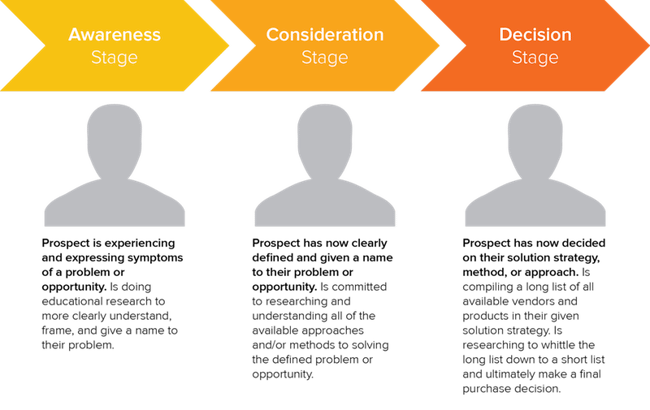
Source: HubSpot
No matter how complicated the buying process gets—what websites they check, how many options they compare, or whether they ask for advice from random people that they know—all prospects will reach these three milestones.
Let’s look at the steps and some core questions to ask for each one.
Awareness Stage
Awareness starts when the prospect realizes there’s a problem he or she should address.
It could be a big, complex business problem – like ensuring end-to-end tracking for components throughout the supply chain. Or, it could be a simple and personal problem: Not being able to fall asleep at night despite being tired.
When awareness strikes, most modern consumers go online right away.
Everyone knows that when they want to solve a problem or answer a question, the web provides them with unparalleled resources. In fact, the vast majority of purchases start with a generic search stating the problem as the prospect understands it.
At this stage, they’re a lot more interested in figuring out what’s going wrong than they are in looking at their specific options for fixing it. They’re likely to click on whatever content seems to be relevant, only evaluating the quality of the source after reading.
Awareness lasts for about as long as it takes the person to define the problem in specific terms. Once they have better words for describing what they’re dealing with, they’ll move on to the next phase. Luckily, this is usually obvious from a marketer’s perspective.
Why? Their search queries start to use more domain-specific language. That is, they start to apply the jargon that goes with their problem.
Questions to Ask Yourself
- How do people first discover they have a problem we can help with?
- What terms are they likely to use when they first notice the problem?
- What sources—online or offline—will they go to for reliable input?
- What misunderstandings are they likely to have on the subject?
- What knowledge gaps will they have that need to be filled?
- What kinds of content are prospects most likely to pay attention to?
Consideration Stage
The consideration phase begins when the problem has been defined.
Imagine you come from an alternate universe where the common cold is, well, uncommon. You could have all the regular symptoms—coughing, sneezing, congestion, and more—and not know exactly what the problem is. What’s more, you’d be bound to encounter many alternative explanations of your symptoms that wouldn’t help you at all.
Once you have the weird, specialized word "cold," you can drill deeper. And that’s exactly what people in the consideration phase are doing.
They know they have a problem, and now they want to know how they can solve it. This usually means starting to gather a list of potential actions they could take, which, in any situation more complicated than scratching an itch, usually means learning about vendors who can help.
But they’re not just learning about the different companies that offer solutions to their challenge.
They’re also establishing buying criteria, ways of knowing what kind of outcomes they should expect, and what features they need in a solution. If you’re buying a certain category of goods or services for the first time, this information is absolutely essential.
Smart marketers can help prospects go straight from awareness to consideration without ever leaving their own website. They do it with helpful, informative inbound marketing content that guides the user through the buyer's journey stages seamlessly.
- What solutions are prospective buyers likely to gravitate towards first?
- What are the major advantages or benefits compelling to buyers?
- What are the major concerns or disadvantages that put buyers off?
- What factors persuade a buyer that a solution is right for them?
- Who do buyers trust when it comes to the topic the solution is related to?
Decision Stage
In the decision phase, prospects know what type of solution they need. They’re clear about their buying criteria.
They even have a list of potential vendors. However, that list isn’t likely to be exhaustive. It consists mostly of companies that have helped in the journey so far.
Now, they apply the buying criteria to make a final decision on what to buy.
This can be the shortest and easiest step, or it could drag on seemingly forever. In large, complex decisions affecting a whole enterprise, stakeholders might revisit the inputs to the decision stage many times – and even retreat into the other two steps temporarily.
Content at this stage should show buyers not just why your solution works, but why it will work for them. That means social proof like testimonials and case studies, thought leadership content , on-site demonstrations, and discovery sessions.
- What helps one solution stand out from another?
- What kind of “proof” are prospects looking for?
- Who needs to be involved in the final decision?
- What pre-implementation preparation is needed?
- Why should buyers choose my solution?
- Is there a next step after the sale is completed?
- How can I delight my buyers?
Remember, any buyer behavior fits within the three-step buyer's journey. Keep your process simple and streamlined by laser-focusing on them and you’ll see how they consistently clear things up. That leads to repeatable planning processes for new products and new personas in the future.
How to Define Your Company's Buyer's Journey
Defining this journey for your company requires some reflection and critical thinking. You need to break your journey up into three stages and describe exactly what your prospects go through.
Follow along with these simple steps.
1. Dig Into What Your Buyers Do During the Awareness Stage.
The end goal for your prospects at this point in their journey is to research the symptoms they're having and actually attribute a name to their problem. You should brainstorm the following points:
This exercise will help you lay out all the information you need to know when you're building a targeted marketing strategy .
2. Step Into Their Shoes for the Consideration Stage.
Next, you want to step into your prospects' perspectives while they're assessing different solutions they want to pursue. Fill out the following points:
By filling out this table, you're gaining a good perspective on how they narrow down their options. When your prospects narrow it down to categories of solutions, they're ready to move onto the decision stage.
3. Hone In On How Buyers Decide to Purchase From You.
Finally, you're ready to learn how your prospects think as they advance toward making a purchase.
When you're at the finish line with prospects, you can really feel the pressure of delivering the right messaging at the right time and in the right way. These details you fill out can help you guide them toward making the right decision for themselves and for you.
4. Put It All Together.
After filling out the buyer's journey details, you need to look at it in its entirety.
This way, you can trace their steps from when they first started expressing symptoms to finally deciding on a solution. And hopefully, that solution comes from you.
When you put all this information together, you gain a strong understanding of how they move through each stage. By learning how they progress, you can identify marketing tactics that help guide them through each stage in an efficient way.
By bringing this information together, you're able to distribute it to your marketing and sales teams and get everyone on the same page. They can learn how to provide value at each stage and nurture them along the journey.
The best way to put it all together is by adding all your information to a buyer's journey template.
Buyer's Journey Template
Download the Bluleadz Buyer's Journey Template to put all your information together in one place. Get your marketing, sales, and customer service teams involved with filling this out.
Every team has great insights on how your current customers find you and make purchases from you. Once you finalize this document, distribute it throughout your company.
This is a great resource for everyone because it gives you opportunities to identify new touchpoints where you can deliver impactful content.
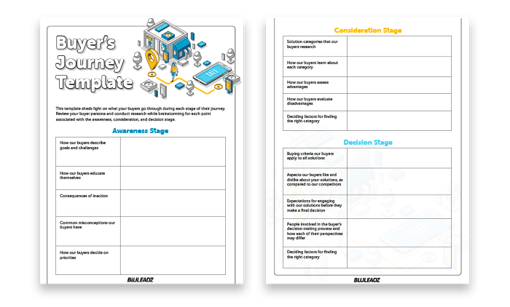
Download your Buyer's Journey Template here ➡️➡️➡️➡️
One of the best ways to use your buyer's journey is planning your content marketing strategy.
How the Buyer's Journey Plays Into Your Content Marketing
A big part of content marketing is determining what kinds of content your target audience needs and when they need it. This comes down to context.
You can plan your content marketing and deliver contextual educational content at the right touchpoints. You need to develop a content map.
With content mapping, your aim is to deliver the right content to the right people at the right time. You know the right people by targeting your buyer personas.
Then, based off of your persona, you can develop content ideas that address their specific needs at the awareness, consideration, and decision stages of their buyer's journey.
The buyer's journey stages align with the concept of the marketing funnel – top of the funnel (TOFU), middle of the funnel (MOFU), and bottom of the funnel (BOFU).
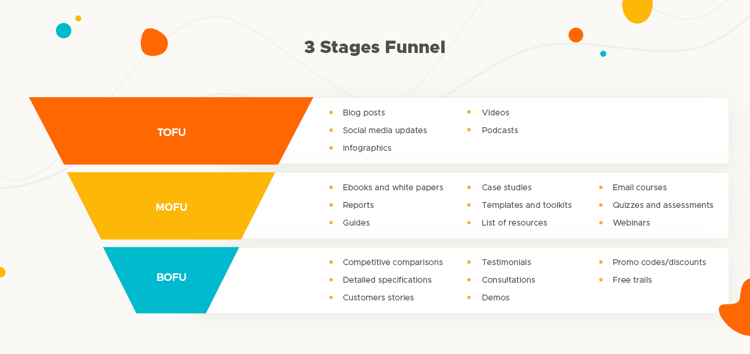
Source: Single Grain
As you can see, there is a lot of opportunity for developing awesome content ideas for each buyer's journey stage.
Your awareness level content (the TOFU stage) is generating awareness for your brand. With consideration content (MOFU), you help your audience with research and comparisons of potential solutions.
Finally, the decision stage content (BOFU) highlights what you have to offer, trying to show them how your solution best fits them.
Ultimately, this process of guiding prospects through the buyer's journey stages requires a lot of time and resources. Once you build a targeted strategy, you're well-equipped to turn curious prospects into happy customers.
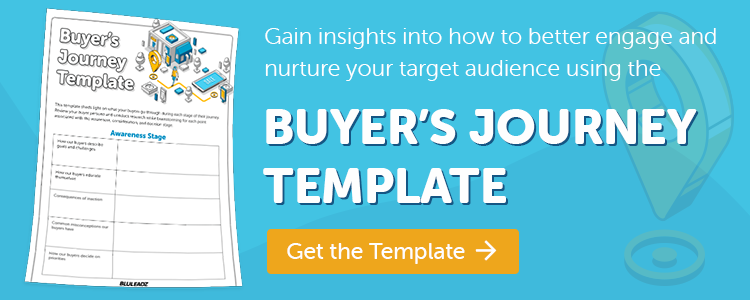
Douglas Phillips
Former military brat, graduated from Leilehua High School in Wahiawa, Hawaii in 2001. After earning my Bachelor's in English/Professional Writing, took on a job as a writer here at Bluleadz.
More Marketing Insights
Can't find what you're looking for try using a keyword..

Learn new skills, connect in real time, and grow your career in the Salesblazer Community.
What Is the Buyer’s Journey — and Why Should You Care About It?
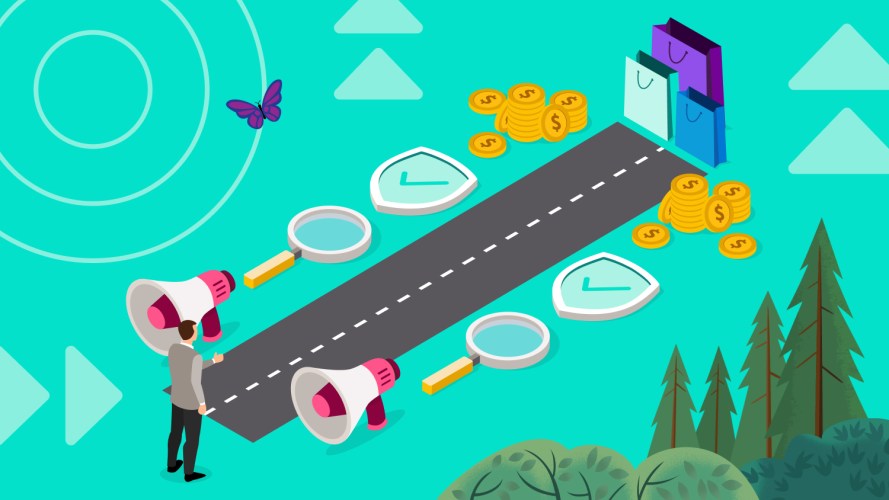
Learn how to map out your buyer's journey to improve the path to purchase.

Erin Hueffner
Share article.
Today’s buyers are more informed than ever. In fact, 81% of reps say customers are conducting their own research before they ever connect with sales. Canned scripts and one-size-fits-all methods won’t cut it when dealing with savvy buyers — they want more detailed information, more personalized solutions, and a tailored sales approach. That’s why it’s so critical to understand the buyer’s journey. Once you know what a prospect needs to move from interest to purchase, you navigate the sales road with ease and close quickly.
Here’s how you get there.
What you’ll learn:
What is the buyer’s journey, what are the stages of the buyer’s journey, why is understanding the buyer’s journey important, how does the buyer’s journey relate to the lead funnel, how to tailor your sales process to the buyer’s journey, buyer’s journey example, drive pipe faster with a single source of truth.
Discover how Sales Cloud uses data and AI to help you manage your pipeline, build relationships, and close deals fast.

The buyer’s journey accounts for all the steps a customer takes to move from discovery for a product to purchase. This includes their behaviors and attitudes toward your brand and how they interact with your marketing and, eventually, your product or service.
This journey is typically segmented into three stages: awareness, consideration, and decision. Don’t assume, however, that every buyer steps through those three stages in 1-2-3 order every time. Buyers’ journeys often wind up taking very non-linear paths. We’ll get into that below.
As noted above, the buyer’s journey can be summed up in three stages. Each stage factors in the psychological state of the buyer, including their needs, behaviors, and decision-making processes. These help inform the actions a seller can take to move the deal forward. Let’s take a closer look at each one:
Awareness stage
Buyers at the awareness stage want something that solves a problem or meets a need, but they don’t know exactly what that is. They start to gather information about solutions, but this information is driven by knowledge of a specific product, service, or brand. Typically, this research involves online research or conversations with others dealing with similar problems/needs.
Tip: At this stage, it’s all about making a strong and credible first impression that lays the groundwork for a relationship based on trust and value. How? By focusing on solutions. Don’t pitch a product — solve a problem. This is when your marketing content, especially on social media, can shine. Video content is a great way to answer questions, provide examples, share testimonials, and deliver in-depth information that promises a helpful solution. As part of this, you’ll want to gently introduce your product — while keeping the focus on the solution it offers, not the features it includes.
Consideration stage
As buyers move into this stage, they are actively researching, comparing, and considering different options. Online shopping and review sites, social media, and email newsletters give customers multiple channels to explore. Take advantage of these by making them next steps in the buyer journey. If you find the buyer is engaging with awareness content like a blog post, for example, create a promo for a newsletter signup in the post to encourage continued engagement.
Tip: Engage potential customers in this stage by providing detailed, comparative, and solution-focused content like blog posts and personalized emails that highlight the unique benefits and features of your offerings.
Decision stage
By now, buyers understand their problem, have done their research, and are ready to make a purchase — but they haven’t crossed the finish line yet. Everything they’ve explored up to now, including price, value, features, benefits, customer reviews, and brand reputation, will be considered and factored into their final decision. The seller’s job? Package all of these as part of the original solution the buyer was looking for.
Tip: In this crucial stage, you want to address any remaining concerns and help the buyer make a purchase decision. To overcome objections , your interactions with customers should be persuasive, reassuring, and clear. Reinforce the value and benefits of your offering. Remember: Selling a solution rather than a product can help set you apart from competitors.
Trending Articles

3 Ways Generative AI Will Help Marketers Connect With Customers

Learn AI Skills on Trailhead
More than just a throwaway sales concept, the buyer’s journey lets you see and understand the choices your buyers make at each stage of the sales process so you can meet their needs in the moment. Understanding the buyer’s journey can give you:
- Enhanced customer insights: Studying the buyer’s journey gives you a deeper understanding of your customers’ needs, pain points, and decision-making processes. This data then helps you create content and strategies that resonate with potential customers.
- Improved content strategy: By knowing what buyers think and want at each stage, you can create content that addresses specific concerns and questions. The right content can provide the guidance customers need to make informed decisions and can also help you field objections.
- Increased sales efficiency: With insights from the buyer’s journey, you can anticipate needs, counter objections quickly, and tailor pitches more effectively. You’re not just selling. You’re providing solutions and guidance at the moment the buyer is most receptive.
- Enhanced customer experience: When you anticipate and address needs at each stage of the journey, you deliver a smoother, more personalized customer experience. This not only increases the likelihood of conversion but also fosters loyalty, leading to repeat business and referrals.
Understanding the buyer’s journey is a key part of building lasting relationships with customers. It’s about moving beyond sales to build genuine connections based on trust and value and ensuring satisfaction at every touchpoint. This ultimately redounds to the seller’s benefit; with strong relationships and loyalty often come repeat sales.
The lead funnel and the buyer’s journey look at the sales process from different perspectives. The lead funnel represents the process from a seller’s or company’s perspective. It outlines the stages a seller walks through on the way to a close. In contrast, the buyer’s journey sees things from the customer’s perspective. It’s all about their experience on the path to purchase.
Aligning your sales process with the buyer’s journey ensures that you meet customer needs at each stage and can guide them toward a purchase decision without delays. Let’s combine what we’ve learned so far into actionable items:
Awareness stage actions
• Understand your audience: Identify and analyze your potential customers’ needs and behavior. Pro tip: Use your CRM to help! An AI-powered tool such as Sales Cloud Einstein can do a lot of the heavy lifting for you via prompt-based research.
• Generate awareness: Use educational content to draw prospects in and establish your brand as a credible source.
Consideration stage actions
- Provide more details product content: Offer comparative, solution-focused content that highlights your product’s benefits.
- Personalize communication: Tailor your interactions with information you’ve gathered about your potential customers.
Decision stage actions
- Address objections: Prepare your team to counter any concerns or objections with clear and compelling information.
- Simplify the purchase: Streamline the buying process, offer clear pricing, and be transparent about contracts.
Get articles selected just for you, in your inbox
The buyer’s journey is not linear. It’s a fluid relationship between brand and customer. Here’s an example that illustrates this:
Raina wants to cut down on her bills and realizes there’s an opportunity to cut down her monthly entertainment spend. Rather than pay for streaming services and cable TV, she wants something that consolidates both.
To start, Raina maps out what she wants. She lists her must-watch shows and researches which streaming platforms offer them (awareness). She narrows her choices to two platforms, including one ad-supported and one premium service. She’s also thinking about adding a live sports package but isn’t clear on which packages carry her favorite teams’ games, so she contacts the streaming service companies for more information (consideration). After chatting with several sales representatives, Raina asks for a demo of one of the service’s sports add-ons. She and the rep discuss subscription plans and go over which games will be available for streaming.
Ultimately, Raina decides to subscribe to both streaming platforms without the additional sports package (decision). Lucky for her, she’s offered a free three-month trial of the live sports add-on at sign-up. After realizing how much she enjoys the add-on in the trial period, Raina decides to keep it.
In this case, Raina’s buyer journey doesn’t end after her purchase. Her experience with the streaming services will influence how she feels about the brands and shape her future interactions with them, including future purchases.
Map to the buyer’s journey for better outcomes
If you pay close attention to the buyer’s journey and deliver high value, your customers are more likely to stay loyal and explore other products in your portfolio, which means more sales. Remember, each interaction with a prospect is an opportunity to understand, engage, and nurture. By aligning your sales process with each stage in the buyer’s journey, you can increase sales while building long-term relationships.
Want to take the #1 CRM for a test drive?
Go on our Guided Tour to see how Sales Cloud boosts productivity at every stage of the sales cycle.

Just For You
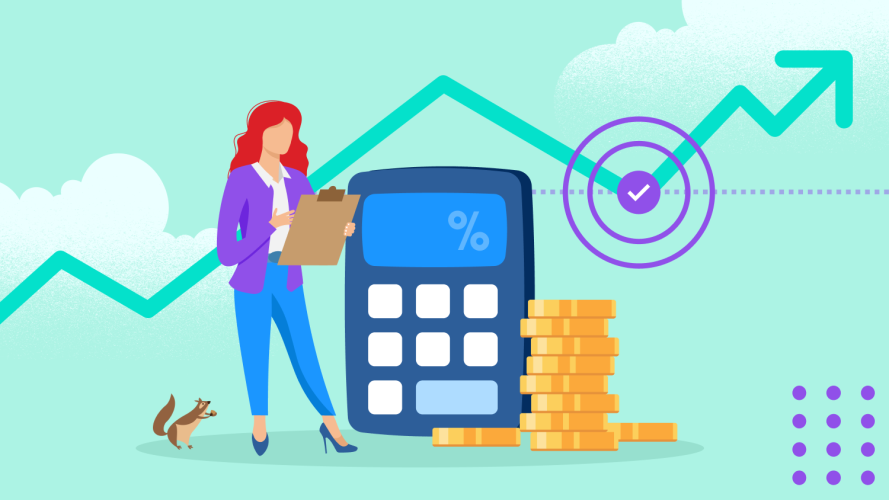
Average Deal Size: The Secret to Forecasting with Confidence
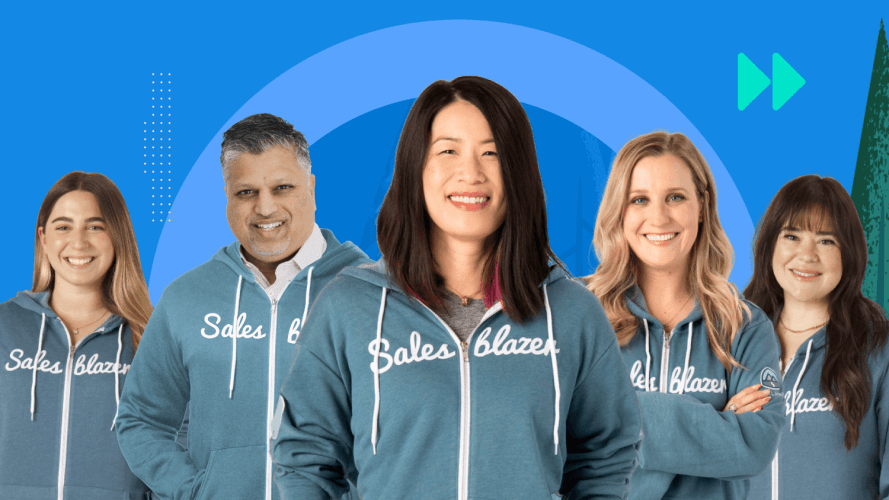
Who Is a Salesblazer?

Explore related content by topic
- Salesblazer
- Sales Fundamentals

Erin Hueffner is a writer from Madison, Wisconsin. Her career spans two decades in tech, journalism, and content marketing. At Salesforce, Erin’s work focuses on sales fundamentals and best practice content for Salesblazers. Erin has a bachelor’s degree in English from the University of Wisconsin-Madison.
Get the latest articles in your inbox.

18 Sales Best Practices From the Most Accomplished Sellers We Know

Shadow Accounting May Be Chipping Away at Your Team’s Performance — Here’s Why
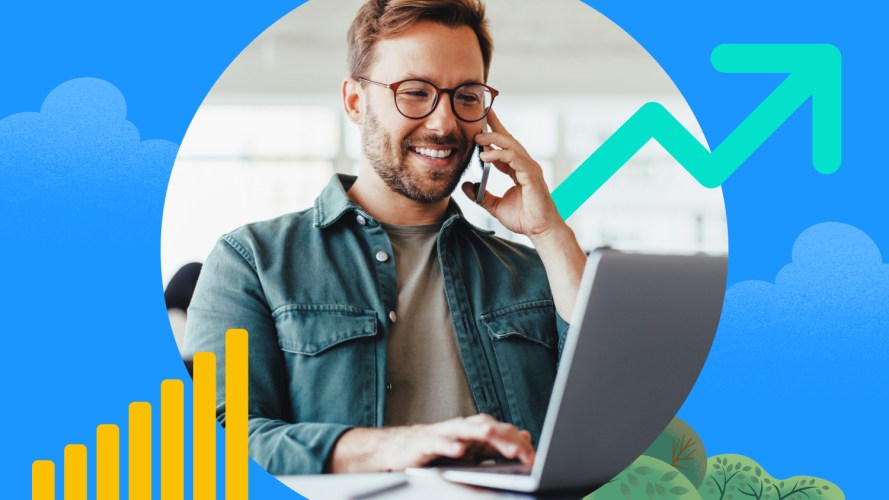
Skill vs. Will: When How-To Just Isn’t Enough in Sales
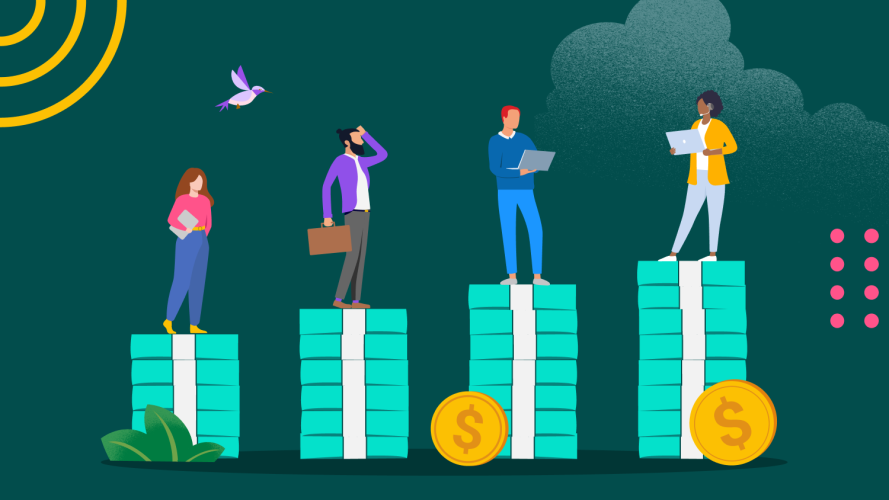
A Beginner’s Guide to Tiered Commission Structures
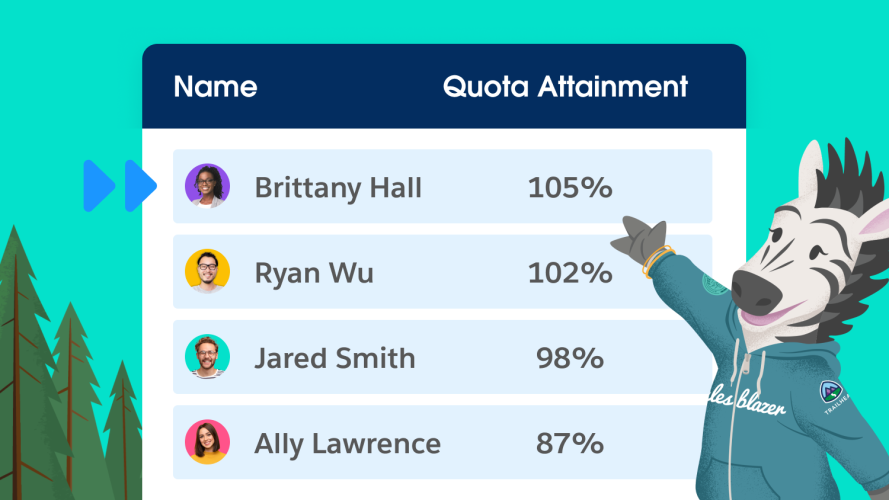
Why a Sales Leaderboard Is the Key to Team Motivation — and How to Use it Effectively

AI From A to Z: The Generative AI Glossary for Business Leaders
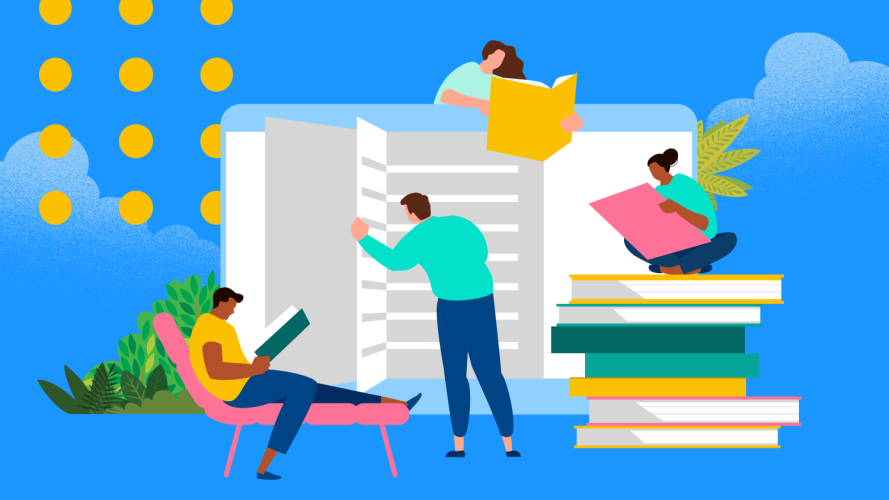
Chicken Soup for the Quota: 12 of the Greatest Sales Books Ever Written
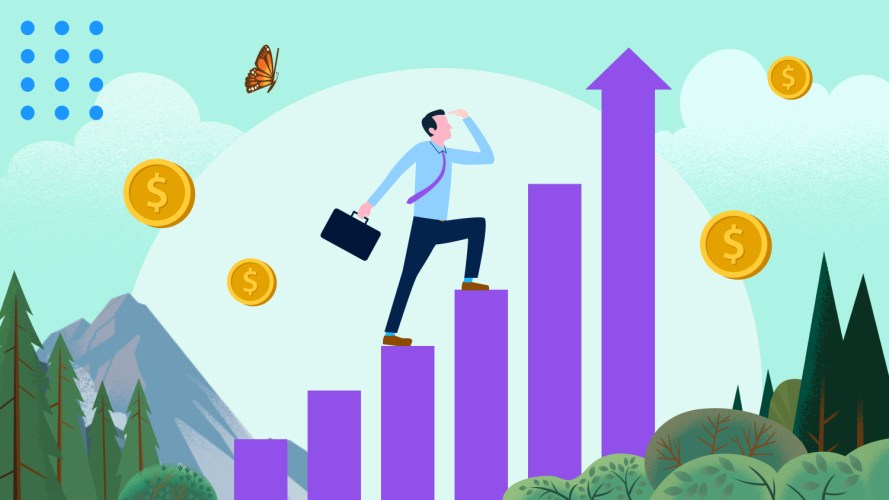
Uncapped Earnings: The Benefits of Limitless Commission

New to Salesforce?
- What is Salesforce?
- Best CRM software
- Explore all products
- What is cloud computing
- Customer success
- Product pricing
About Salesforce
- Salesforce.org
- Sustainability
Popular Links
- Salesforce Mobile
- AppExchange
- CRM software
- Salesforce LIVE
- Salesforce for startups
- América Latina (Español)
- Brasil (Português)
- Canada (English)
- Canada (Français)
- United States (English)
Europe, Middle East, and Africa
- España (Español)
- Deutschland (Deutsch)
- France (Français)
- Italia (Italiano)
- Nederland (Nederlands)
- Sverige (Svenska)
- United Kingdom (English)
- All other countries (English)
Asia Pacific
- Australia (English)
- India (English)
- Malaysia (English)
- ประเทศไทย (ไทย)
© Copyright 2024 Salesforce, Inc. All rights reserved. Various trademarks held by their respective owners. Salesforce, Inc. Salesforce Tower, 415 Mission Street, 3rd Floor, San Francisco, CA 94105, United States
- Case studies
- Expert advice
What is the buyer journey? Definition, stages, and examples
Step into the realm where choices weave the intricate fabric of consumer decisions — the buyer journey. As we navigate this landscape, we'll uncover the definition, stages of such a journey, and real-world examples that demystify the process.
Join us on this expedition — no fluff, just the essential roadmap to unravel the buyer journey and decode the patterns that drive purchasing decisions.
Ready to explore the journey that transforms curiosity into commerce? Let's unravel the layers together.
- 1.1 Why is the buyer journey important?
- 2 Buyer journey stages
- 3 Buyer journey optimization
- 4.1 Amazon and its seamless e-commerce experience
- 4.2 HubSpot and its inbound marketing excellence
- 4.3 Buyer journey templates
- 5.1 Key takeaways
What is the buyer journey? Why is it important?
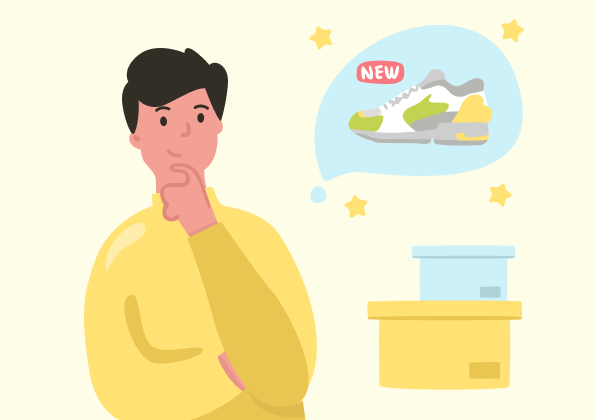
The buyer journey represents the holistic path a buyer takes as they move through the various stages leading to a purchase. It’s a comprehensive process that encapsulates the entirety of a customer's experience, from the initial awareness of a product or service to the final decision-making and post-purchase evaluation. The depth and complexity of such a journey are heightened by the fact that it can be online, offline, or a mix of both. Here are the examples:
- Online journey: A customer discovers a digital product through a targeted social media ad, researches online reviews, and makes a purchase on an e-commerce website. Post-purchase, they use the online product and engage with the brand through email newsletters and online customer support.
- Offline journey: A customer learns about a product through a traditional print advertisement, visits a physical store to explore the item, consults with in-store staff, and makes the purchase. The post-purchase phase involves using the product and potentially providing feedback through physical channels.
- Mixed journey: A customer first encounters a product via an online influencer's review, then visits a brick-and-mortar store to examine it physically. They might purchase online using a mobile app, receiving post-purchase updates through both email and in-store promotions.
Why is the buyer journey important?
Understanding the buyer journey is of paramount importance for businesses for many reasons.
- Customer-centric approach
By comprehending the buyer journey, businesses can adopt a more customer-centric approach. It means aligning products, services, and digital marketing efforts with the needs and preferences of the customers at each journey stage . This customer-centricity fosters a positive and engaging experience, enhancing the likelihood of conversion.
- Tailored marketing strategies
The buyer journey provides businesses with insights into the specific touchpoints and channels that customers engage with during their decision-making process. Armed with this knowledge, organizations can tailor their marketing strategies to be more effective at each stage. For instance, deploy inbound marketing and educational materials to capture attention, especially during the awareness stage.
- Building trust and credibility
Trust is a crucial element in any purchase decision. Understanding a buying journey enables businesses to build trust by delivering consistent messaging, quality content, and positive interactions at each touchpoint. This trust-building process is vital for establishing credibility and driving long-term customer relationships.
- Optimizing user experience
A seamless and enjoyable user experience is critical to guiding potential buyers through the journey. With buyer journey analysis, businesses can identify pain points and areas of improvement in their processes. This could include optimizing website navigation, streamlining checkout processes, or enhancing customer support.
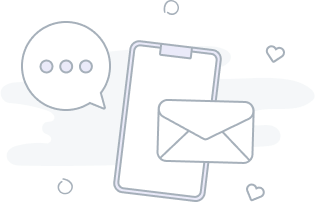
- Data-driven decision-making
The buyer journey map is a valuable source of data that businesses can use to inform their decision-making. Analyzing customer behavior, preferences, and feedback at each stage provides actionable insights. This data-driven approach enables companies to refine their strategies, allocate resources efficiently, and stay agile in a dynamic market.
- Maximizing customer lifetime value
Understanding the buyer journey goes beyond the point of purchase. Post-purchase stages of the journey, such as customer loyalty and advocacy, are crucial for maximizing customer lifetime value. Businesses that continue to engage and delight customers even after the sale are more likely to benefit from repeat business and positive word-of-mouth marketing.
In essence, the buyer journey serves as a roadmap for businesses to navigate the complex landscape of customer decision-making. It empowers companies to meet customer expectations, build lasting relationships, and ultimately drive sustainable business growth.
Buyer journey stages
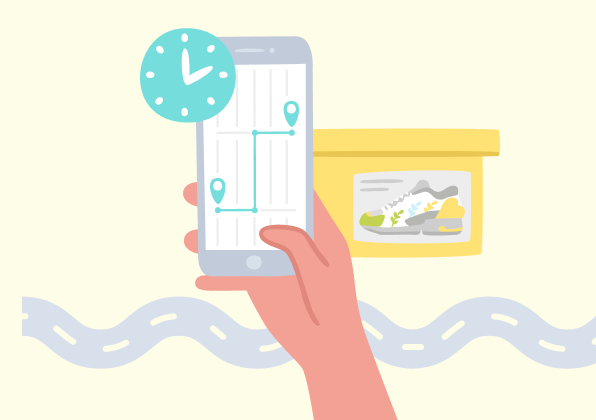
The buyer journey consists of stages a potential customer goes through before making a purchase decision. All journeys are somewhat different, but it's possible to identify broad stages common to each. Let's explore these stages in detail:
- Awareness stage
This is the initial stage where the buyer becomes aware of a problem or need. They may not be aware of specific solutions yet.
Example: Someone realizes they need a new smartphone because their current one is outdated and struggles with performance.
- Research and discovery stage
At this stage, the buyer actively seeks information to understand and define their problem. They research potential solutions and gather relevant data.
Example: The individual might explore various smartphone brands, read reviews, and compare features to find the best fit for their needs.
- Consideration stage
At this point, the buyer narrows down their options and is evaluating specific products or services. They compare features, prices, and benefits.
Example: The person may be deciding between two or three smartphone models based on factors like camera quality, battery life, and overall performance.
- Decision stage
The buyer is now ready to make a decision and commit to a particular product or service. They might look for discounts, compare final prices, and explore additional incentives.
Example: The individual decides to purchase a specific smartphone model, adds it to the cart, and proceeds to check out.
- Purchase stage
This is the point of transaction where the buyer completes the purchase. It could happen online, in-store, or through various other channels.
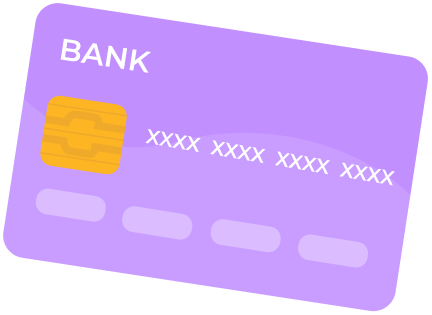
Example: The person confirms the purchase, enters payment information, and receives confirmation of the order.
- Post-purchase stages
After the purchase, the buyer uses the product or service and forms their experience about it. This stage is crucial for customer satisfaction and potential loyalty.
Example: The individual starts using the new smartphone, and their experience is positive. They might leave a review, share their experience on social media, or consider the brand for future purchases.
- Loyalty and advocacy stage
There is an additional stage focusing on turning customers into loyal advocates. This involves fostering ongoing relationships, encouraging repeat business, and leveraging satisfied customers for viral marketing. This stage is often overlooked by businesses, and it's a mistake.
Example: The satisfied smartphone user recommends the brand to friends, engages with loyalty programs, and becomes an advocate for the product.
Read also: How to create a journey map step-by-step + examples
Understanding and visualizing these stages allows businesses to tailor their marketing, sales, and customer support strategies to address customers' specific needs and concerns at each step. It helps create a more personalized and effective approach, ultimately increasing the likelihood of conversion and building long-term customer relationships.
Buyer journey optimization
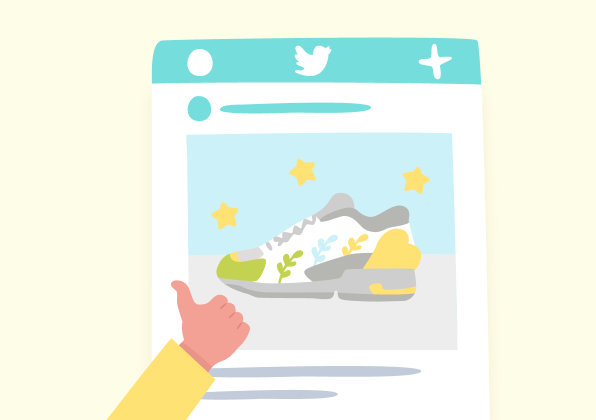
Buyer journey optimization involves refining and enhancing the various stages of the customer's path to purchase to improve overall efficiency, effectiveness, and customer satisfaction and experience.
By strategically optimizing each stage of the journey, businesses can maximize conversion rates, build stronger customer relationships, and increase long-term loyalty. Here's a detailed exploration of buyer journey optimization with examples and potential outcomes:
- Data-driven analysis
Example: A company collects and analyzes data on customer behavior, interactions, and preferences at each stage of the buyer journey using analytics tools and customer relationship management (CRM) systems.
Outcome: Insights gained from data analysis help businesses identify patterns, pain points, and opportunities for improvement in the buyer journey.
- Personalized content and messaging
Example: Leveraging data insights, a business tailors its content and messaging to match the preferences and needs of specific buyer personas at different stages of the journey.
Outcome: Personalized content increases engagement and resonates more effectively with potential customers, leading to a higher likelihood of conversion.
- Seamless multichannel experience
Example: An e-commerce platform ensures a consistent and seamless experience for customers across various channels, including online platforms, mobile apps, and physical stores.
Outcome: A unified multichannel experience reduces friction, enhances customer satisfaction, and provides a cohesive journey regardless of the chosen interaction channel.
- Optimized website and user experience
Example: A company invests in user experience design , making its website intuitive, easy to navigate, and optimized for both desktop and mobile users.
Outcome: Improved website usability enhances customer satisfaction, reduces bounce rates, and encourages visitors to move smoothly through the buyer journey.

- Marketing automation
Example: Implementing digital marketing automation tools to deliver targeted and timely messages, such as personalized emails, based on customer behavior and interactions.
Outcome: Marketing automation streamlines communication, helps to nurture leads, and ensures that potential customers receive relevant information at the right moment in time, increasing the chances of conversion.
- Streamlined checkout process
Example: An e-commerce platform simplifies its checkout process, minimizing the number of steps required and offering various payment options.
Outcome: A streamlined checkout process reduces cart abandonment rates and friction during the purchase stage, leading to higher conversion rates.
- Post-purchase engagement
Example: After a customer makes a purchase, a business engages in post-purchase communication, seeking feedback, offering support, and providing additional resources or exclusive offers.
Outcome: Positive post-purchase engagement contributes to customer satisfaction, encourages repeat business, and fosters brand loyalty.
- Continuous iteration and improvement:
Example: Regularly reviewing analytics, customer feedback, and market trends to identify areas for further optimization and adjustment in the buyer journey strategy.
Outcome: Continuous iteration ensures that the buyer journey remains responsive to changing customer needs and market dynamics, maintaining high levels of effectiveness over time.
In summary, journey optimization is an ongoing process that requires a combination of data analysis, personalization, technological integration, and a customer-centric mindset. By strategically implementing these optimizations, businesses can create a more seamless, engaging, and efficient journey for their customers, ultimately driving higher conversion rates and long-term customer loyalty.
Buyer journey examples
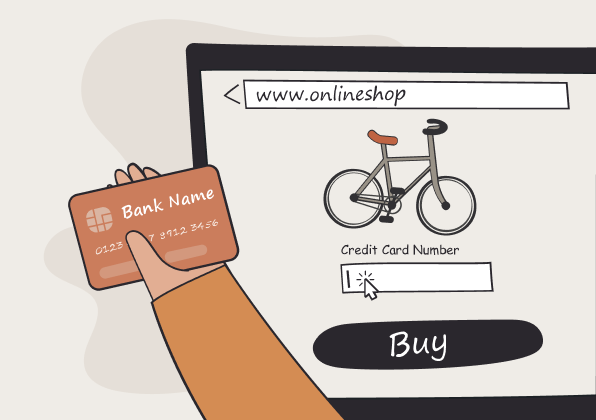
Let's consider a couple of examples of buyer journeys in well-known companies, what they do to improve it, and how it works in practice.
Amazon and its seamless e-commerce experience
Even if you don't use Amazon products, you've definitely heard about them.
Amazon excels in creating awareness through targeted ads, personalized recommendations, and a vast product catalog. For example, if a user searches for a specific product, Amazon's algorithms provide relevant suggestions, increasing the chances of discovery.
The product pages on Amazon are rich in information, featuring detailed product descriptions, customer reviews, and frequently asked questions. This assists customers in making informed decisions during the research stage.
Amazon leverages personalized recommendations and targeted emails to remind users about products they viewed or added to their cart. Special promotions, such as lightning deals, create a sense of urgency, influencing the decision-making process.
The one-click purchase option streamlines the decision-making process, offering a frictionless checkout experience. Amazon's transparent shipping and return policies contribute to the customer's confidence in their decision.
- Post-purchase stage
Amazon invests in post-purchase engagement through order tracking, delivery notifications, and follow-up emails. Additionally, their customer service is readily available to address any issues, enhancing post-purchase satisfaction.
HubSpot and its inbound marketing excellence
HubSpot is a comprehensive inbound marketing, sales, and customer service platform designed to help businesses attract, engage, and delight customers. And they do delight.
HubSpot built a robust online presence through inbound marketing. Their blog, webinars, and downloadable resources provide valuable information, attracting businesses looking for marketing and sales solutions.
HubSpot offers free tools, such as CRM and marketing analytics, allowing users to explore and understand the platform's capabilities before making a commitment. Their educational content assists businesses in the research stage.
HubSpot's sales team engages with potential customers through personalized email outreach, offering product demonstrations, and addressing specific pain points. This approach helps businesses evaluate HubSpot's fit for their needs.
HubSpot's pricing transparency and scalable solutions cater to businesses of different sizes. They provide flexible payment options and a clear onboarding process, making it easier for businesses to decide.
HubSpot focuses on customer success through continuous education, regular updates on new features, and a vibrant community. They encourage users to maximize the platform's potential, fostering long-term loyalty.
These examples showcase how companies like Amazon and HubSpot strategically engage with customers at each stage of the buyer journey, leading to successful conversions and sustained customer relationships.
Buyer journey templates
Visual aids can often speak louder than words. Therefore, here are some templates for various scenarios. They'll be a great asset to your initiative.
- Case 1: A bicycle buyer journey, where a potential buyer, filled with excitement and a quest for the perfect bicycle, navigates the online realm in search of their two-wheeled companion.
- Case 2: An offline grocery buyer journey, where our persona embarks on the classic journey to the neighborhood supermarket, weaving through aisles in search of sustenance and delights.
- Case 3: A sneakers' buyer journey, where a persona sets out to find the ideal pair of sneakers, exploring the vast world of online options and paving the way for stylish strides.
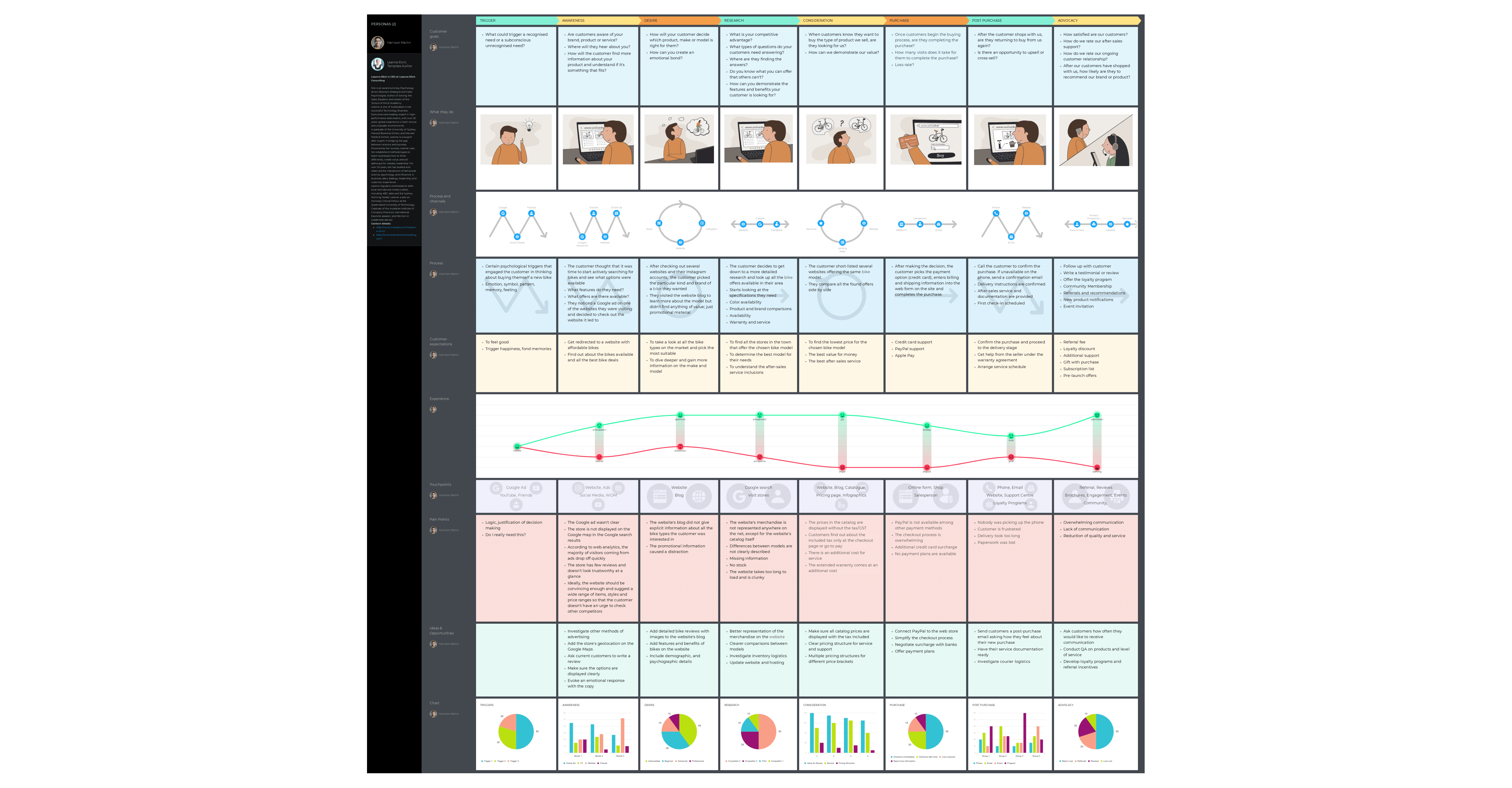
Wrapping up
In unraveling the complexities of the buyer journey, we've delved into its definition, stages, and real-world examples. This journey is not merely a linear path from awareness to purchase; it's an intricate process that demands a nuanced understanding of customer behavior.
Key takeaways
- Businesses must align products, services, and marketing efforts with customer needs at each stage, fostering positive and engaging experiences.
- Analyzing the buyer journey provides valuable data for refining strategies, optimizing user experiences, and staying agile in a dynamic market.
- Building trust through consistent messaging, quality content, and positive interactions is crucial for establishing credibility and fostering long-term relationships.
- The journey doesn't end with a purchase; positive post-purchase experiences contribute to customer satisfaction, loyalty, and advocacy.
- Buyer journey optimization is an ongoing process involving data analysis, personalization, technological integration, and a customer-centric mindset.
As we navigate the ever-evolving landscape of consumer decisions, understanding and effectively leveraging the buyer journey is not just a strategy; it's a fundamental approach that can drive sustainable business growth. So, let's continue to unravel the layers of this intricate journey, adapting and refining our strategies to meet the ever-changing needs of our customers.
Related posts
Rate this post
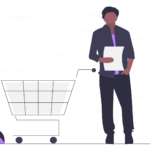

- Inbound Marketing
- Content Marketing
- Lead Generation Websites
- HubSpot Marketing Automation
- Success Stories
- Ebooks, Templates & Toolkits
- Guide to Digital Marketing Reports
- How to Launch a Podcast
- Marketer's Guide to Buyer Personas
- Guide to Pillar Pages & Topic Clusters
- How to Create a B2B Content Strategy
Buyer Journey Mapping in 7 Easy Steps [EXAMPLES + TEMPLATE]
Apr 15, '22 / by Beth Carter
Editor’s Note: This blog post was originally written by Christina Bockisch and published in 2018. We have refreshed and updated the post to include more helpful examples!
I had just moved to Boston. In November. My legs were freezing, cold air was whistling up the back of my jacket and I couldn’t stop shivering.
I recognized I had a problem, so I turned to Google to do some research. I read a couple of articles and browsed some different styles of jackets. Soon I realized the best solution for me was a parka, instead of the warm-but-too-short jacket I currently had. So, I braved the Boston cold, went to multiple stores all over the city, and found a thick The North Face parka that saved me from freezing.
In other words, I completed my buyer’s journey.
In the story above, my buyer’s journey began the moment I realized I had a problem: I’m cold. I then went on to define my problem: My short jacket doesn’t keep my legs warm enough. Next, I identified a solution: I need a parka. And finally, I chose the right brand to solve my problem: The North Face.
It’s a simple example, sure. But whether you’re selling something as straightforward as winter jackets or as complex as SAP cybersecurity software, it’s important to understand how your potential customers think about their pain points as they move through this buyer’s journey and make their buying decision. This enables you to create content that directly aligns to each stage in that journey, which in turn enables you to deliver a far superior customer experience. And yet, it’s surprising how many B2B marketers ignore the buyer’s journey in their content strategy process.
What is the buyer’s journey?
The buyer’s journey describes the process your buyers go through as they become aware of a problem, evaluate potential solutions to their problem, and ultimately decide on the specific solution that’s right for them.
In marketing terms, we think of these stages of the buyer’s journey as:
- Awareness stage
- Consideration stage
- Decision stage
Awareness Stage
In the awareness stage, a person is experiencing symptoms of their pain point, but they don’t quite understand exactly what their problem is. Their goal at this stage is to help your customer more clearly define the problem they’re experiencing.
- I have a sore throat. Am I getting sick?
- I’m not getting enough traffic to my website. Why?
- Our production machinery is getting old. Is it time to replace it?
To create content that helps buyers in the awareness stage, focus on addressing pain points, challenges and goals at a relatively high level. Make sure the content is informative and resist the urge to start selling the buyer on your particular solution to their problem. Keep it low pressure.
Useful content like guides, blog posts, infographics, and quizzes will help your buyers wrap their heads around their pain points, so they can figure out what their next step should be.
Consideration Stage
In the consideration stage, the person understands what the problem is and begins researching possible solutions.
- I have all the symptoms of strep throat. Should I see a doctor, or should I try a home remedy?
- My website is not properly optimized for search engines. Would it help to start a blog?
- We should begin planning now to replace our machinery next year. What features of a new model will be important for us?
Businesses often struggle with creating consideration stage content because it feels like the right time to start promoting your business as the best solution. Don’t! Instead, the consideration stage is the perfect opportunity to serve up in-depth content that acknowledges different approaches that could possibly work for the buyer. Among these options, you can still (subtly) position your company as the best solution.
Consideration-stage content is also a terrific way to identify potential good-fit leads – the buyers who are right for your business and can benefit from product or service you sell.
Decision Stage
In the decision stage, the person has settled on a specific approach and is putting together a short list of vendors to possibly buy from. Their goal here is to narrow down that list and ultimately make a final buying decision.
- I think I should go to urgent care. Here are the urgent care centers near me that also accept my insurance.
- I would like to blog, but I need help. Here is a list of three agencies that might be a good fit for me.
- We need better production automation capabilities. Here are the models on the market today that offer what we need.
With decision-stage content, you can finally openly promote your product or service. Show how you solve your buyer’s problems and explain why your option is the best approach. Be honest yet humble, and wherever possible back up any claims with data. For example, rather than unprovable statements like “We are the best in the market,” instead try to be more specific: “We have a 4.9 out of 5 rating on this industry site” or “We helped Company XYZ grow by 50% last year.”
Data sheets, comparison blog posts, case studies, ROI calculators, and buying guides are powerful content for the decision stage.
An important note about the buyer’s journey stages
In an ideal world, every person would move through the buyer’s journey exactly the way I described above – in a straight line from awareness to consideration to decision. And as they move through that journey, they’d have all the information they needed to make a purchase decision once they arrive at the decision stage.
Unfortunately, real life is rarely so neat and tidy.
People today don’t always move through this journey in a linear fashion. Buyers are human. They’ll jump around, skip stages, and sometimes go backwards rather than forward. They can even get all the way to the decision stage only to realize they misidentified their pain point, which means they have to start the whole buying journey process all over again.
Your job as a marketer is to plan for as many of these situations as possible. The best way to do this is to create a content strategy that covers all the stages of the buyer’s journey. This will ensure that no matter where someone is in their specific journey, when they find your brand, they’ll find all the information they need to make an informed buying decision.
Related Content: Content With Purpose: How to Align Content to the Buyer’s Journey
7 steps for mapping the buyer’s journey.
Now that you have a better understanding of what the buyer’s journey is, here is a helpful buyer journey framework for you to follow when building your content strategy.
1. Define your buyer personas.
I think I say this every time I write a blog, but if you haven’t already created your buyer personas, stop what you’re doing and create them now. Seriously.
If you don’t know who your buyers are – and specifically if you don’t know your buyer persona’s challenges, questions, and goals they’re trying to accomplish – you’ll have a hard time creating a buyer journey map and accurately aligning your content to that journey.
For guidance on getting started with buyer personas, check out this post that highlights specific questions to ask during buyer persona interviews.
These sample buyer persona templates may also be helpful.
Okay, so let’s assume you have your buyer personas fully identified and documented. Now you’re ready to start building your journey map.
2. What are your most important buyer persona challenges?
To map the awareness stage of the buyer’s journey, first, identify the obstacles and problems that prevent your buyer from accomplishing their goals.
Next, think about how your buyer first begins to realize this obstacle or problem even exists. What challenges begin to emerge? What concerns do they begin to have? What puts this on their radar?
There will be a lot to think about here, so write it all down. (Side note: Now would be a good time to download the Buyer’s Journey Toolkit we provided above. Trust me, it’ll help tremendously.)
3. What are all the possible solutions to these problems?
To map the consideration stage of the buying journey, think about the different approaches your buyer might consider as they try to figure out how to solve their problem. After all, there’s usually more than one way to skin a cat. Is there a do-it-yourself approach? Are there off-the-shelf solutions? Or does the problem require something more specialized or customized?
As the buyer explores these different solutions, what questions will be top of mind for them? What concerns will they likely have?
4. What other companies offer your type of solution?
To map the decision stage of the buying journey, list the other companies that offer a type of solution comparable to yours. (I’ll admit that thinking about your competitors is no fun, but it needs to be done.)
What questions will your buyer have when they vet each of these competitors? How will they evaluate these options? Which features will be most important to their decision?
For example: Your buyer might quickly cross “do nothing” off the list. But they’ll also probably look closely at all their software options, looking at things like cost, functionality, and ease of use. They might conduct a few demos to get a feel for how the different software options work.
Similarly, they might start building a short list of IT service providers. They might look for case studies to see how the different service providers work. And they might even contact you for a consultation to see if you’d be a good fit for them.
5. Identify points of friction along the buyer’s journey.
Whew – you’ve mapped out the awareness, consideration and decision stages of the buyer’s journey. Congratulations! But your work isn’t done quite yet.
What might prevent the buyer from moving smoothly from one stage to the next? What challenges do they encounter during their journey? What might cause them to move backward? What might prevent them from making a purchasing decision?
And what can you do to ensure this doesn’t happen and that you’re providing the smoothest customer experience possible?
This is going to require you to think hard about what your buyers are actually doing rather than what you hope they’re doing. But by identifying these possible points of friction that might prevent a buyer from becoming a customer, you’ll be able to create content that truly helps and sells.
6. How does your existing content fit into this buyer’s journey?
You likely already have some content on your website, like blogs, ebooks, guides, consultations and more. Audit your existing content , and think about where each piece falls in in this customer experience map. Which content addresses pain points and challenges at a high level? Which content is focused on specific solutions? Which content proactively sells your business as the right partner?
Don’t rush through this step.
Once you have a good handle on what role your content can play, map each piece of content to the corresponding stage of the buyer’s journey.
7. Create new content to fill in the gaps.
Now that you know where your existing content fits into the buyer’s journey, identify any gaps. Many B2B marketers find they have a lot of awareness-stage and decision-stage content but that they don’t have enough consideration-stage content. Don’t stress – this is totally normal.
As you strategize how to fill in these content gaps, we recommend starting at the end of the buyer’s journey and moving backward. In other words, first create your decision-stage content, then consideration, and then awareness. This accomplishes two things: First, it helps you keep your eye focused on converting buyers into customers . And second, it ensures that for every new content piece you create, you already have a “next step” to point to.
For example, if you first create a decision-stage vendor comparison checklist and then you create a consideration-stage ebook, when a buyer downloads the ebook you're able to share your vendor comparison checklist with the buyer as a natural next step. But if you start by creating the ebook, you won’t have any next-step content ready to share with those buyers.
As you’re creating all this new content, continually refer back to your buyer journey map. Make sure each piece of content addresses the specific questions, challenges, and goals your buyers have at each stage of the game.
When you do this, you’ll provide helpful, valuable and relevant information that provides your buyers with the information they need when they need it and reduces friction along the way – ultimately leading to happy, satisfied customers who will turn into promoters of your brand.
Now that you know what the buyer’s journey looks like for your customers, it’s time to create content for each stage of this journey. Download our free editorial calendar template and start planning your content today!

Topics: Content Marketing , Strategy

Written by Beth Carter
I love to write and I'm a total grammar freak. I also passionately believe that conversational, approachable and insightful content can help people solve real problems and can make a real difference in the world.
Related Blog Posts
Content With Purpose: How to Align Content to the Buyer’s Journey

A 5-Step Guide to Conducting a Full Content Audit for Your Website

7 Tips to Keep Your Content Marketing Strategy on Track
Browse Posts by Topic:
Subscribe to receive all our latest content right in your inbox., get social with us, [fa icon="facebook-square"] [fa icon="linkedin-square"] [fa icon="twitter-square"].
Clariant Creative is a full-service inbound marketing agency based in the western suburbs of Chicago, IL.
We help businesses create clarity in their marketing, so they can help their clients move forward with confidence.

Our Services
- Inbound Marketing Services
- Content Marketing Services
Clariant Creative Agency, LLC
[fa icon="phone"] 630-330-9825
[fa icon="envelope"] [email protected]
[fa icon="map-marker"] 1468 Ambleside Circle, Naperville IL 60540
Popular Posts
- The PESO Model©
- Strategic Consulting
- Speaking Engagements
Ask These 15 Questions to Improve Your Buyer’s Journey
By Laura Petrolino
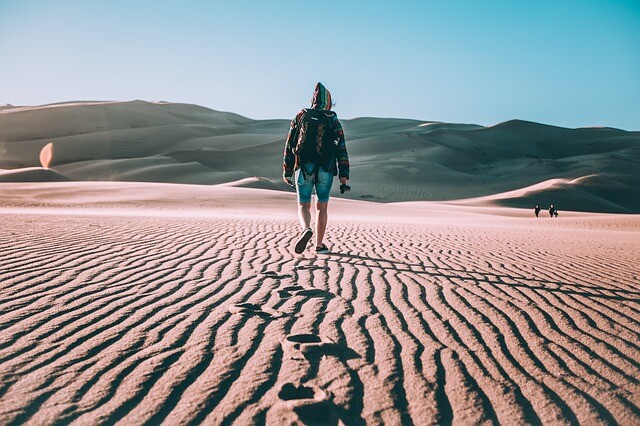
Every time a consumer makes a decision to buy (or not to buy) a product, that decision is influenced by a zillion different little factors—all of which make up the overall buying experience.
While product, service, messaging, visual brand, and overall communications strategy are all crucial pieces on their own, even more important is how they work together to create an overall customer experience .
An effective buyer’s journey maximizes this experience. It integrates all the working pieces in a way that educates, builds confidence, provides motivation, and proactively addresses customers needs.
Unfortunately, this is a difficult thing to see in context.
We’re often so close to our product or service we suffer from the curse of knowledge. We aren’t fully able to see how our customers experience the buying process.
We don’t consider the buyer’s journey—nor the many different paths it can take.
In the ever changing digital world it is important to constantly review your buyer’s journey. Review the details, as well as what it looks like in totality.
Unfortunately, because there are so many ways a buyer can journey from discovery to sell, this task can often seem overwhelming.
Break it down into the following stages in order to make sure you cover all aspects.
Buyer’s Journey Stage 1: Create Awareness. Cultivate Research.
During the initial stages of your buyer’s journey, they become aware they have a need .
This might be a pain that needs resolution, it might be a desire they want to fulfill, it might be a goal they need help reaching.
They might be aware of what the actual need is. Or often they will just be aware of the problem but not yet be able to connect the need.
Additionally, they might isolate a problem, but it’s not actually the right one.
It’s important you understand the needs your buyer commonly comes to you with and the context in which those needs exist.
That will affect how you approach your buyer in these early stages, including:
- The tone and voice you use
- The imagery you provide
- The educational content you lead with
- The level of engagement you request from them
While the buyer recognizes their need at this stage, they might not yet feel it requires a purchase or investment to resolve.
This is why content that helps a buyer diagnose and solve a problem is crucial in the awareness stage.
Your goals at this stage are awareness, education, and developing credibility. All of which work together.
Ask yourself:
- How will the people who need us find us? Think about owned media and SEO .
- Does our messaging and keyword strategy target the right prospects? Because it doesn’t matter how many people you bring into your marketing funnel, if they aren’t the right people you are just spinning your wheels.
- What channels does our buyer use to find us? Google? ( 72 percent of buyers turn to Google first.) Social media? Word of mouth sites? Influencers?
- What is their experience through each of those channels? Is it consistent and integrated throughout? Studies have shown about 57 percent of the purchase decision is complete before a customer ever interacts with you.
- Does our content clearly define what problems we can solve for our prospects? Once they find you they need to know that the content you provide is relevant to their needs.
Nailing the awareness stage really comes down to creating an effective PESO model strategy. Learn how to do this in the university-accredited PESO model certification .
Buyer’s Journey Stage 2: The Consideration Stage
Once your prospect has a fairly good understanding of what they need they will enter the consideration stage of the buyer’s journey.
They’ll start to wade through all the details and choices they’ve learned about in the awareness and research stage.
This is when you will clearly help them identify the details they need to consider in order to make the best decision—even if the results of that choice don’t lead to you.
- Do we help our buyers prioritize criteria that’s important to them? Through content on-site or behind landing pages, such as lead magnets of checklists, quizzes, or frequently-asked questions.
- Do we provide an easy way for them to have hands-on experience or live interaction? Sometimes a buyer just wants to go to you directly. Do you provide a demo or the ability to connect with a customer service rep quickly and easily?
- Are there clear calls-to-action to help them take their preferred next step? Whether that be to request a demo, contact you in some way for more info, chat live, watch video testimonials, or download a more detailed white paper or case study.
- Is all information consistent? Seventy percent of buyers return to Google two to three times during their research. You need to make sure every new piece of information they receive about you is consistent and supports what they learned previously. This is also why a PESO model strategy continues to be crucial during every stage.
- Do we anticipate their questions and answer them through content? Content should help them understand what they need and how you might be able to serve those needs.
Buyer’s Journey Stage 3: Confirm Return on Investment
Your buyer is almost there, but before they make a final decision, most buyers need reassurance they can trust you and that their purchase will be worth the investment (whether that be time or money, or both).
The justification stage of the buyer’s journey supplies the reassurance they need.
- Do we supply content that clearly shows return-on-investment? This might be case studies, clear data, testimonials, or any other type of proof of concept content.
Buyer’s Journey Stage 4: Decision Time!
Your buyer has finally made it and it’s time for them to make a decision.
Don’t blow it!
You can easily lose an engaged and interested prospect at the end of their buyer’s journey if you don’t continue to provide support at this stage.
Remember consistency is key throughout the journey.
The immediate pre/post conversion time is crucial for setting the stage for customer loyalty , satisfaction, and creating potential long-term ambassadors for your business. Make sure you make it count.
- Do we provide decision-stage prospects the same customer service we provide early-stage prospects? Don’t drop them off at the top of the mountain — help them to the other side.
- Is the timeline for on-boarding, implementation, or start-up effective and efficient? Do you provide a clear timeline for them from the start so expectations are clear and they can plan accordingly?
- Do we have a clear process to answer and resolve any start-up questions or concerns? Process is key at this point in time, both for the new customer and your team.
- Do we provide transition support and guidance? Is there someone dedicated to this transition or implementation time to help guide new customers through and provide for their needs? Your job is to make this process as easy as possible. Provide support, resources, project management, and even help them with communications around the transition.
Analyze. Improve. Repeat.
These 15 questions will help you critique and improve your own buyer’s journey.
The best strategy is to answer them yourself once and then go through the buyer’s journey in real-time and answer them again. You’ll most likely find discrepancies between what you thought the experience was and what it actually is.
Creating a buyer experience that generates, nurtures, and converts prospects into happy customers is no easy or quick process, but a successful buyer’s journey will not only bring you new customers through the process itself, but also lay the foundation for loyal brand ambassadors and continue business growth.
Time very well spent.
Laura Petrolino
Laura Petrolino is chief marketing officer for Spin Sucks, an integrated marketing communications firm that provides strategic counsel and professional development for in-house and agency communications teams. She is a weekly contributor for their award-winning blog of the same name. Spin Sucks . Join the Spin Sucks community.
Related Posts
Distance Is Not a Barrier: How Marketing Empowers Remote Businesses
How to Align Sales and Marketing Teams to Skyrocket Your Startup
Marketing Agency Challenges: The Halloween Costume Edition
- Skip to main content
- Skip to primary sidebar
- Skip to footer
- QuestionPro

- Solutions Industries Gaming Automotive Sports and events Education Government Travel & Hospitality Financial Services Healthcare Cannabis Technology Use Case NPS+ Communities Audience Contactless surveys Mobile LivePolls Member Experience GDPR Positive People Science 360 Feedback Surveys
- Resources Blog eBooks Survey Templates Case Studies Training Help center
Home CX Customer Experience
Buyer’s Journey: Definition, Importance & Stages
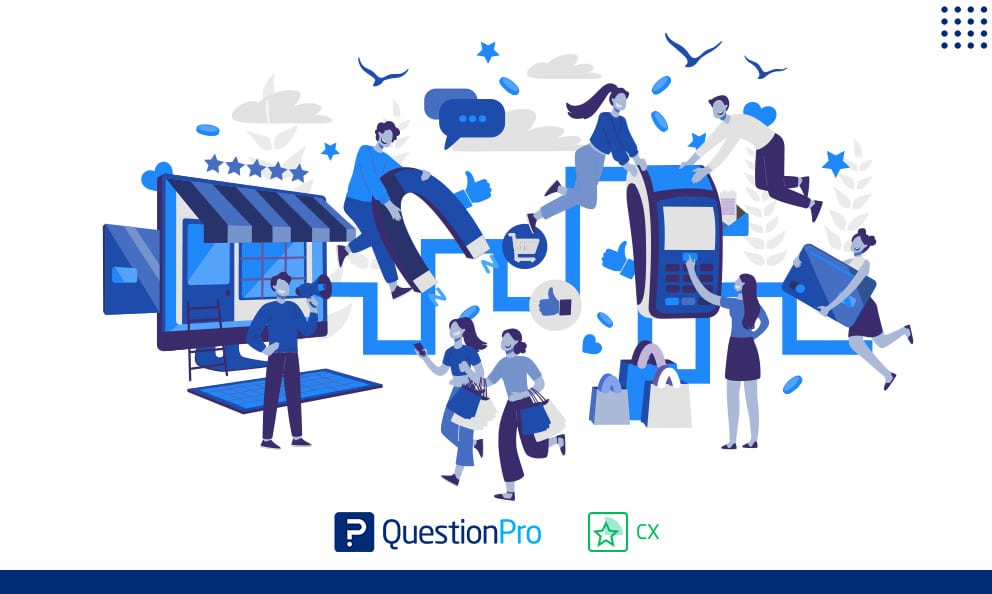
Do you know what type of information your potential consumer wants or cares about before even considering purchasing something from you?
Buyers often start with something they need and eventually make a purchase decision that aligns with or solves that need. If you haven’t already, you should pay close attention to everything that happens before the purchase intent.
In this article, you will learn what the buyer journey is and the three stages involved, examples included. Have a good read!
What is the Buyer Journey?
The buyer journey is the active search process carried out by a potential consumer until it converts into a sale of your product or service.
Our goal is to provide the target user or Buyer Persona with the best content in each one of the phases to lead them to the final purchase or contract.
For this, selecting the best content and call to action will be essential, naturally taking them from one phase to another.
It’s important to mention that the buyer journey is a different concept from the Customer Journey . While the buyer journey is merely focused on closing the sale, the customer journey centers on turning the consumer into a frequent buyer converting them into loyal customers of your business.
You may also check out this guide to learn how to build your own Customer Journey Map .
The Buyer Journey Stages
Understanding the phases a consumer goes through before finalizing their purchase process is critical. Why? Because of the kind of relationship, the information delivered and the company’s marketing efforts are different at each stage.
As mentioned earlier, the buyer journey goes through the customer awareness , consideration, and decision stages. Let’s take a look at what each means and review it with an example afterward:
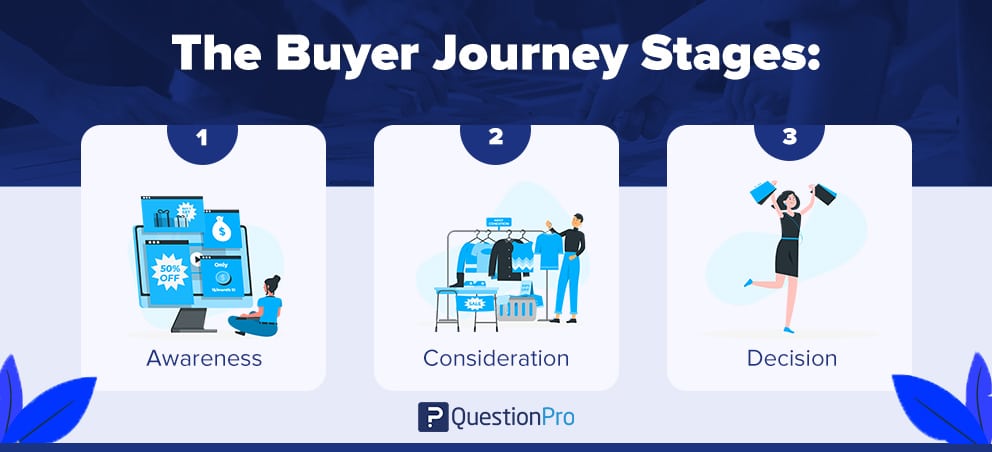
1. The Awareness Stage: The discovery of a specific problem or need. Here, the buyer is wondering about the problem to solve: they want to know more about what it is, why it happens, to whom it happens, etc.
2. The Consideration Stage: The investigation and consideration of the different existing solutions, which to this day are mostly carried out online. Buyer’s questions are solution-focused: how is it resolved, what options do you have, how your price is better (or not) than the competition, etc.
3. The Decision Stage: The purchase decision is the moment when the prospect is about to become a customer by choosing a particular product or service. In the decision phase, their concern is selecting the best brand among the options researched/ available.
Awareness of the type of questions a buyer asks at each stage of their purchase cycle allows you to generate specific educational content for each one, offering concrete answers to their problems.
And this is where another of the keys to this whole process comes in: the user persona . It is essential to have buyer persona profiles that allow you to know who your ideal customers are, and what their characteristics, desires and concerns are. This helps to determine what kind of questions your prospects are asking,
Buyer Journey Example
Imagine your business provides complete web design and optimization services to e-commerce platforms. You want to win over a potential client. In that case, we will have to provide what they are looking for in each of the buyer journey’s phases.
Awareness: Our potential client perceives that their e-commerce sales are stagnant or even starting to drop. They begin to search the Internet for what could be the causes of their problem.
Example: Create content to post with tips and techniques to boost sales in e-commerce, for instance.
Consideration: Now that the buyer is aware of their problem and is considering possible solutions, it is time to offer information about your product or service to guide them in the best solution for their needs.
Example: They learn about the need for web design and optimization services businesses available and find information about your company in Ads or your business blog articles.
Decision : In the final stage, we must offer a tangible solution that is just what the consumer wants.
Example: Providing one-sheets, case studies, comparing features vs. the competition, free trials, etc. Anything that could make your prospect experience and engage with your brand.
If you like reading about buyer journey, you might find it enjoyable learning about customer journey vs customer experience: the difference or car buyer journey
The buyer journey in the B2B sector
In the B2B sector, relationships tend to be established between experts and rely heavily on trust. Through their website, blog and social networks, a B2B business has the opportunity to start building this fundamental pillar.
Nowadays, online channels are where more than 80% of companies begin their purchasing process . For this reason, the internet is also the place to start solving the problems of these prospects, taking into account who they are and what they need according to the stage of the buyer’s journey in which they are.
Sales processes in the B2B sector are long and complex. This is mainly because buyers spend considerable time researching products thoroughly, analyzing all aspects before deciding.
These particularities of the commercial process in the industry require a content strategy focused on helping those buyers. That is, a strategy that considers the characteristics of the buyer persona and their questions at each stage of the purchase cycle.
LEARN ABOUT: Consumer Decision Journey
Wrapping up, it is critical to understand the buyer’s needs so you can tackle them in the best way possible.
In the end, it is about accompanying your consumer’s side in each phase to provide them with the precise information they need during their journey.
This is not an easy task. It is almost utopian, so we must work on our customer journey mapping to understand their experience and how it can be improved.
How QuestionPro CX can help you boost your customers’ experience
QuestionPro CX will help determine if you offer consumers a positive experience and encourage their interaction with your brand by providing tools to drive actionable insights.
Start following your customer’s journey. QuestionPro offers some of the most advanced customer experience tools available. Gain valuable insights into your customers’ thoughts and feelings using QuestionPro CX today.
MORE LIKE THIS

NPS Survey Platform: Types, Tips, 11 Best Platforms & Tools
Apr 26, 2024

User Journey vs User Flow: Differences and Similarities

Best 7 Gap Analysis Tools to Empower Your Business
Apr 25, 2024

12 Best Employee Survey Tools for Organizational Excellence
Other categories.
- Academic Research
- Artificial Intelligence
- Assessments
- Brand Awareness
- Case Studies
- Communities
- Consumer Insights
- Customer effort score
- Customer Engagement
- Customer Experience
- Customer Loyalty
- Customer Research
- Customer Satisfaction
- Employee Benefits
- Employee Engagement
- Employee Retention
- Friday Five
- General Data Protection Regulation
- Insights Hub
- Life@QuestionPro
- Market Research
- Mobile diaries
- Mobile Surveys
- New Features
- Online Communities
- Question Types
- Questionnaire
- QuestionPro Products
- Release Notes
- Research Tools and Apps
- Revenue at Risk
- Survey Templates
- Training Tips
- Uncategorized
- Video Learning Series
- What’s Coming Up
- Workforce Intelligence

- What is Inbound?
- Should You Outsource or Hire a Writer?
- How to Design and Execute a Content Strategy
- SEO Agency Case Study
- CPA & Business Advisor Case Study
- Entrepreneur Case Study
- Food Services Case Study
- Marketing Agency Case Study
- Ultimate Guide to Cannabis Marketing
- Bacon Bits Blog
- Download ALL of our Free Guides
- Get Ready Content Bundles
- Done for You Content Subscriptions
- Content Easy Button
- LinkedIn Makeover
- Website Grader
Defining the Buyer’s Journey: 15 Questions to Nail Down the Problem and Solution
You need an intimate understanding of your customer and the obstacles they face at every touchpoint along the way. start with these questions..
Key Takeaways:
- Today’s buyers hold the reins when navigating the buyer’s journey.
- 76% of customers get frustrated when companies don’t personalize their experience.
- The only way to understand the buyer’s journey is by asking the right questions.
- The awareness, consideration, and decision stages each come with unique questions to help you define the journey.
- With the answers to those questions, you can paint the touchpoints that make up the journey (and the personas who activate the touchpoints).
The buyer’s journey is becoming the most important framework in inbound marketing. Every sale your brand makes is the result of a buyer completing their journey – and every instance of churn is the result of a buyer prematurely ending it.
The most well-known iteration of the buyer’s journey is a three-stage map:
- The awareness stage The buyer is actively looking for ways to address the problem they’ve identified.
- The consideration stage The buyer has enough information about available solutions to think about making a decision.
- The decision stage The buyer decides to purchase your product or service as the solution to their problem.
Of course, the buyer’s journey never really ends if you want to retain customers. Converting that sales funnel into a flywheel turns happy buyers into promoters through another three stages to know: attracting, engaging, and delighting them.
That journey can take many routes, though, so it’s important to anticipate all the potential paths buyers may take to reach you.
The buyer’s journey is customer-led and increasingly complex
There’s one important thing you need to understand: Sellers don’t pilot the buyer’s journey anymore – if they ever did!
"Sellers don’t pilot the buyer’s journey anymore – if they ever did!"
Buyers are in the driver’s seat, so it’s not enough to build a linear journey map that brings your lead from point A to point B to point C. Instead, you have to consider the likelihood that your customers will want to circle from point B back to point A to review some information, and then go back to point B to think about their options. After that, they may finally make a decision about your product or service. There’s no one absolute way they’ll go.
The point is your buyers are too picky to shoehorn into a linear buyer’s journey that lacks real definition. They also likely feel they have to be picky because no one else will recognize their pain points and anticipate the solution for them, right?
That’s where you come in.
Buyers want brands to anticipate their needs
These days, it’s not enough to have a killer solution to a big problem. Even if you have that, you may still be missing out on leads and customers. That’s because you have to show buyers that you’re inside their heads and tackling their problems from a place of understanding.
"Show buyers that you’re inside their heads and tackling their problems from a place of understanding."
You need to get personal. Recent research from Twilio found that over half (56%) of customers say they’ll become repeat purchasers after a personalized experience with a brand. And that number increased by 7% since 2022.
If you don’t live up to these expectations, you could lose potential customers before they even reach the end of the buyer’s journey. Consumers want personalization to feel understood and seen. They want to know that you are considering their unique needs and experiences.
Ask these questions about buyers at every stage of the buyer’s journey
The only way to understand your buyer is to ask the right questions and think critically about the answers from the buyer’s perspective.
Consider this: the buyer’s journey is already partially over before your sales team even hears from a prospect. If you don’t define your sales funnel’s stages based on the buyer’s needs, they might bounce before ever landing on your product.
"If you don’t define your sales funnel’s stages based on the buyer’s needs, they might bounce before ever landing on your product."
Ask yourself these 15 questions to define the buyer’s journey at each stage.
Questions for the awareness stage:
- What’s the buyer’s biggest goal?
- What’s their biggest obstacle in the way of that goal?
- Where does the buyer go to troubleshoot their challenges?
- How does the buyer decide to prioritize solving a challenge?
- Who does the buyer turn to for advice about their challenges and goals?
Questions for the consideration stage:
- Where does your buyer go to find and compare solutions?
- What information does your buyer need to compare solutions (e.g., pricing)?
- How does the buyer weigh the pros and cons of solutions?
- How does the buyer digest information most effectively?
- What are the buyer’s deal-breakers?
Questions for the decision stage:
- Who else does the buyer need to involve in a decision?
- Do buyers need to prepare to implement the solution (e.g., make an implementation plan)?
- Is your buyer more likely to make a decision if they can try the product first?
- What questions does the buyer have about implementing your solution?
- What are the most important criteria for your buyer’s decision-making process?
Bonus: 5 questions for the retention stage
Not all iterations of the buyer’s journey include ”retention” as an outlined stage, but it’s a critical fourth stage that’s also represented on the flywheel as ”delight.”
You see, it can be five to seven times more expensive to attract a new customer compared to retaining an existing one. Simply boosting retention by even 5% can increase profits between 25% and 95%.
Ask yourself these five questions to guide your buyers from decision to retention:
- What are the buyer’s expectations for your solution?
- What obstacles might get in the way of the buyer’s desired results?
- What results should the buyer expect from your solution?
- What action does the buyer need to take to maximize results?
- How does the buyer quantify results, value, and satisfaction with your solution?
Walk with ContentBacon through your buyer’s journey
Telling your brand’s story through the buyer’s journey requires some intensive thought about:
- Who your buyer is and what they want
- Their biggest pain points, challenges, and goals
- The personas that represent them
- The touchpoints they go through
- The buyer’s thought processes and priorities
That’s a lot to cover. You can get pretty close in 15 questions, but you might still want some extra support.
ContentBacon gives you that. Check out our newsletter, Bacon Bits , to read about attracting, engaging, and delighting the people who make your business turn on its axis. Then, read about our content subscriptions when you’re interested in partnering with us for kickass inbound marketing content.
How's your current content plan?
We're offering a no strings attached content assessment. Have our experts provide you a free evaluation of your content plan and we'll provide you some free strategy on how to optimize. On the house (really).
Related Blogs
Crm mastery: 6 proven steps to supercharge your sales pipeline.
Unlock the full potential of your CRM with these essential strategies for dynamic sales growth. Key takeaways:
Bacon Bits of Wisdom: The 2023 Roundup
As we wrap up another year of innovative ideas and insightful strategies, it's time to take a journey through our 2023 article collection.
Mastering the Art of Email Marketing: Strategies, Subject Lines, and Avoiding Spam
Is email marketing dead? Not even close. Find out why it’s so important for your modern audiences and how to engage people with it. Key takeaways

QUICK LINKS
- Subscriptions
Sign Up For Our Newsletter
© 2024 All rights reserved
What’s the Buyer’s Journey? Definition, Stages, and Examples
- March 3, 2024
Your buyers don’t just turn up at your door with money in hand ready to buy your product. Instead, they go on a (sometimes complicated) journey that eventually leads to them making a purchase.
Understanding the buyer’s journey is a great way to make your sales process more efficient while also improving the customer experience. With a clear buyer’s journey, you can ensure your customers get what they’re looking for every step of the way.
What’s the Buyer’s Journey?
The buyer’s journey is simply the steps someone goes through before making a purchase.
How often do you discover a brand new product and buy it there or then? The chances are it’s not very often. In fact, in some industries, it’s suggested it takes an average of eight touchpoints to get an initial meeting.
The buyer’s journey tracks the steps your customers take to becoming a customer and even beyond. It’s split up into four stages: awareness, consideration, decision, and delight.
Understanding the buyer’s journey is important because it allows you to serve prospects with the information they need at each stage of the process. For example, when you’ve just learned about cold outreach, you want different information from when you’re comparing the best cold email platforms .
The buyer’s journey is a way to visualize the steps your customers take so you can help progress them through the journey.
What Are the Stages of the Buyer’s Journey?
A traditional buyer’s journey is split into four stages. At each stage in the journey, the buyer wants something slightly different from your business, and a clear picture of your buyer’s journey will help you provide the right content at the right time.
The four stages are awareness, consideration, decision, and delight, and each one requires a slightly different approach.
The more you can tailor your content, and communication to match the prospect’s position in the buyer’s journey, the more likely you are to build a relationship with the customer and progress them to the next stage.
Awareness Stage (TOFU – Top of the Funnel)
The awareness stage is when the lead becomes aware of a pain point . This is also known as the top of the funnel, where customers make their first interaction with your business.
Content at the awareness stage of the buyer’s journey is characterized by answering questions, troubleshooting confusion, and introducing your brand.
For example, if someone was looking at doing a cold email for the first time, they might look for articles like “What Is Cold Email?” or “Is Cold Email Right for My Business?” These are often big-picture questions, and they allow the lead to get a feel for whether your product is suitable for them.
It’s also a great chance to introduce your brand. Although you’re certainly not going to go for a hard sell at this stage, it’s an opportunity to put your name out there. In this case, it’s a chance to say “hey, we’re Mailshake, we’ve got tons of great info on cold email if you want to discover more.”
The customer has become aware of a problem (eg. they want a new phone, their current software is outdated, they need a new way to grow their business), and this is your chance to help them explore the problem while making them aware of your brand.
Content that works well at the awareness stage:
- Educational blog articles
- Ebooks, whitepapers, checklists, and guides
- Explainer videos
- Industry reports
- Infographics
Consideration Stage (MOFU – Middle of the Funnel)
As your leads move into the consideration stage their goals change. They’re no longer trying to familiarize themselves with the basics of your products – instead, they’re considering their options.
At this stage, people have looked at the merits of cold email and decided it’s the right option for their business. The question that remains is how they go about implementing it and what platform they use.
Now, unless you’ve got a monopoly on your market, then the chances are the customer is going to have a lot of choices at this point. You’ve done good work in the awareness stage by putting your brand in their mind and starting to build a relationship, but there’s still more to do.
This is where you need to build on your relationships, driving customers back to your website, capturing emails, and utilizing your social reach.
When people are considering their options, your brand becomes extremely powerful. It’s a chance to say “hey, remember me, I gave you that great info on cold email – see how you can use it with our platform.”
At the consideration stage, your content should change to reflect your leads’ goals, utilizing:
- More technical, specific article blogs
- Comparison whitepapers
- Product feature videos
This will link the knowledge your prospects already have to your products, explaining how the benefits fit into the bigger picture.
Decision Stage (BOFU – Bottom of the Funnel)
In the decision stage, your customer is ready to make a purchase.
In our example, they know they need sales automation software, but they’re still not sure which platform to use. After all, there are lots of different options out there, all with their own features and benefits.
This is where people weigh up their options, ultimately deciding which product or service offers them the most value.
All the work you have done throughout the customer journey will pay off here. People recognize the value you have given them by helping them learn about their subject and understand the features.
Now it’s time you drive things home by maximizing your funnel conversions. To do this, you’ve got to be extremely focused on the decision stage, and make sure you’re constantly optimizing your approach.
Test out your processes to make sure:
- You’re giving people the information they need to make the final decision
- The process of becoming a customer is as simple as possible
- You’re maximizing the value of each sale
Again, your content can play a key part and you should look to incorporate different content types at this stage:
- Documented success stories such as case studies and testimonials
- Free product trials
- Free consultations or live demonstrations
- Product comparison
- “About Us” website pages
Delight Stage (Post Purchase)
It’s easy to feel like the job’s done once a purchase has been made, but if this is the case, then you might be missing out.
The delight stage takes place post-purchase, and it’s an extremely important step for your business.
Repeat customers are great. You’ve already built a great relationship with them, they understand your products, and they’ve loved what they’ve received.
You don’t want to leave this to chance though. You want to delight people even after they’ve made a purchase, and turn them into brand ambassadors for your products.
To do this, you can use things like:
- Workshops to help people get the most out of your products
- Regular newsletter with tips and tricks
- Discounts on future purchases
- Behind the scenes look at your business
It’s simply a way of showing your customers that you’re still there for them, and you’re still invested in their experience.
The delight stage is an important part of the buyer’s journey and it can have a big impact on your revenue.
Tailoring Your Sales Process to the Buyer’s Journey
The buyer’s journey is a recognition that not every prospect is looking for the same thing.
While it’s difficult to completely tailor your sales process to each individual, it is possible to tailor your approach based on where they are in the buyer’s journey. When you have a clear picture of how people move through your journey and what they’re looking for at each stage, then it’s much easier to be there with the right answer.
Every customer is unique, but if you know where they are in the buyer’s journey, then you’ve got a much better idea of what content they’re looking for. Make the most of this by tailoring your sales process.
A Buyer’s Journey Should Serve as a Blueprint
It helps you to understand what information a customer is looking for at each stage in the process, maximizing your touchpoints , and building stronger relationships. Not only can this help you make more sales, but it can lead to higher-value sales and more repeat business.
It’s time to map out your buyer’s journey and understand what your customers are looking for.
Luiz Cent is the Head of Sales at Mailshake, in addition to SaaS sales coaching & marketing growth, Luiz is passionate about sustainability, yoga, travel & urban jungles.

- Content Marketing
- Practical Prospecting Podcast
- Success Stories
Continue reading
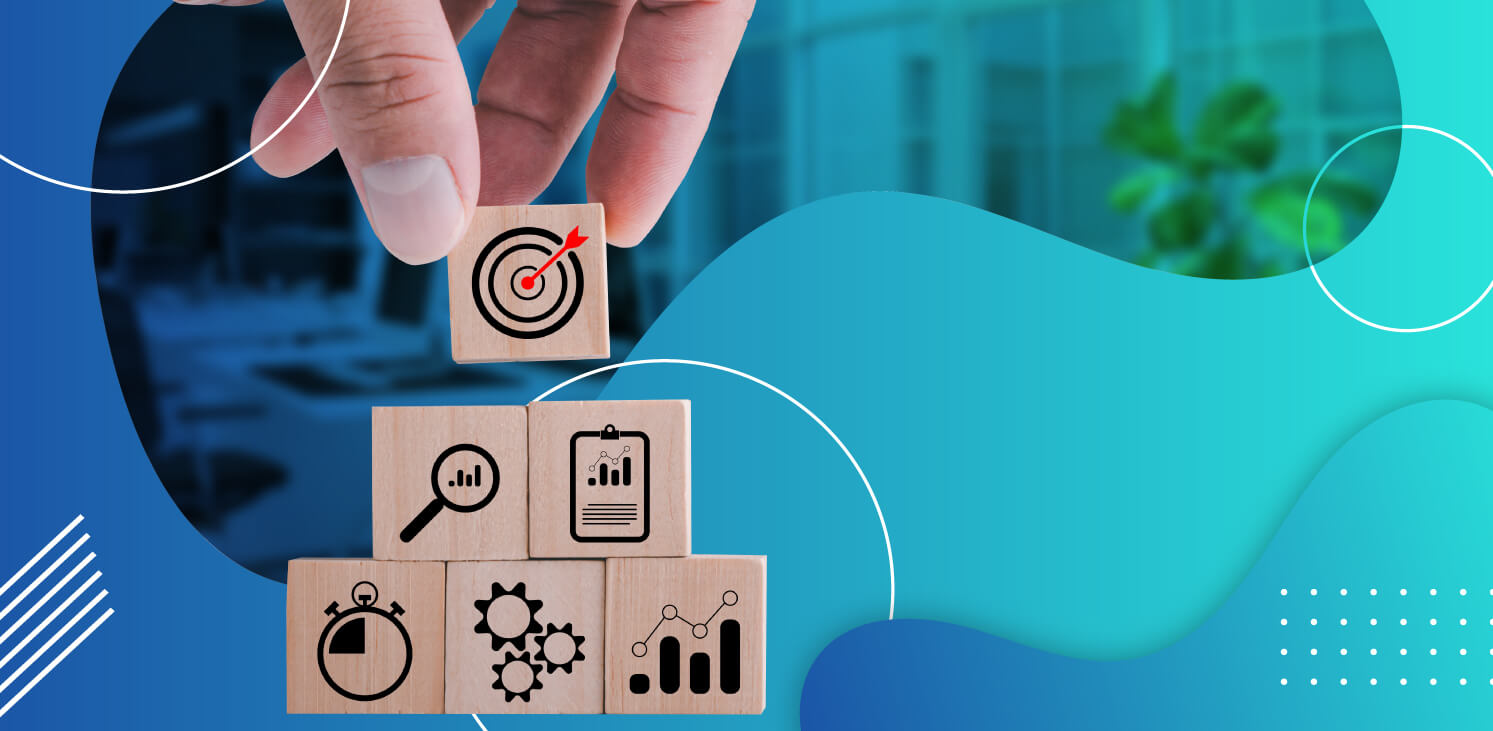
Sales Team Management: 13 Tips to Manage Your Sales Team
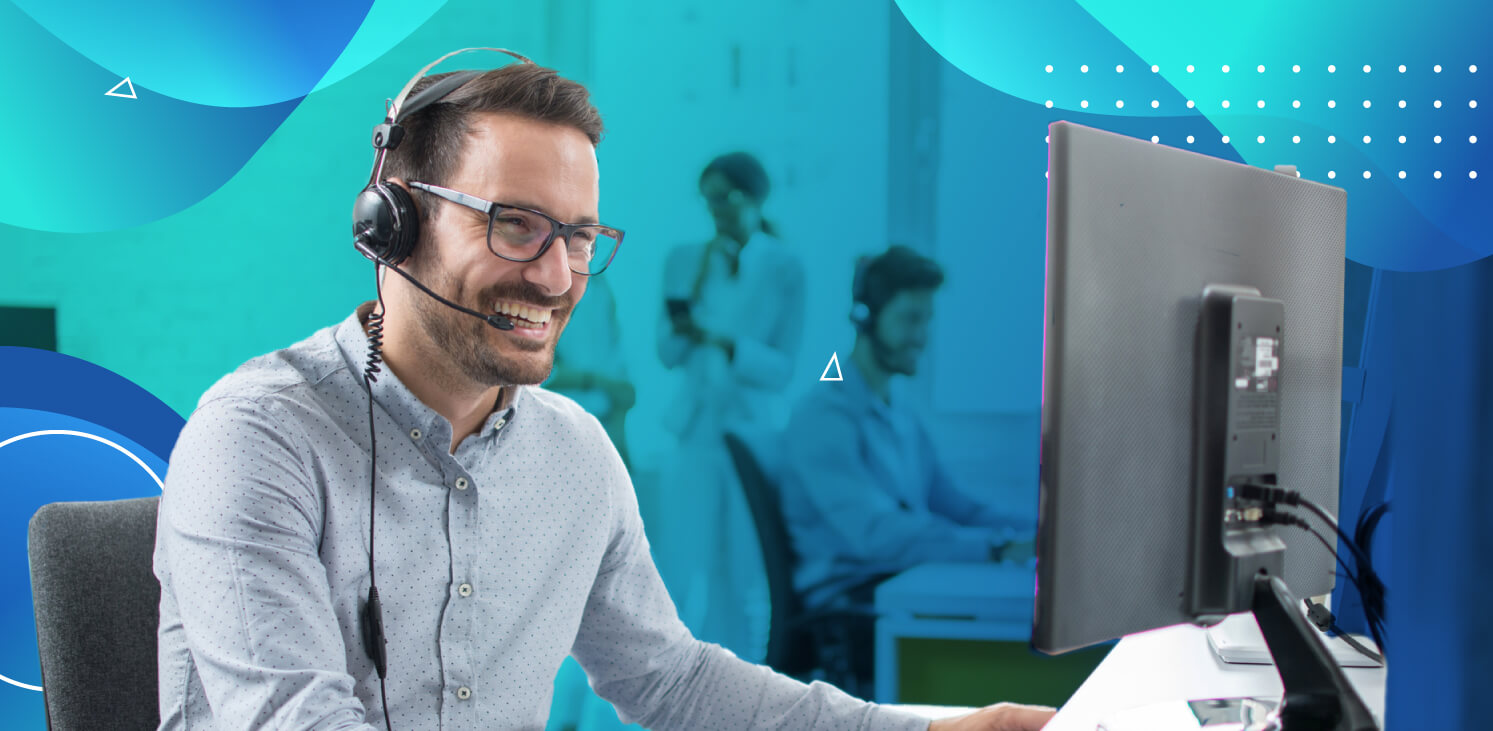
How to Upsell: 8 Upselling Techniques for Salespeople
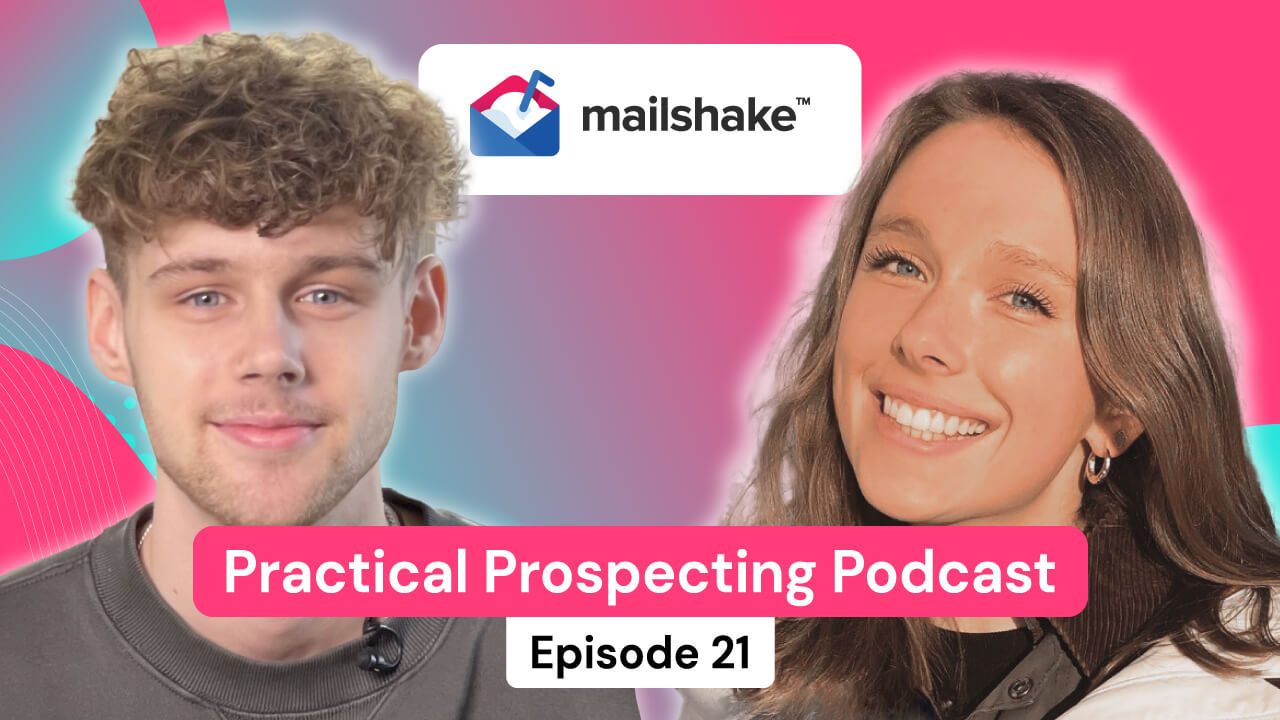
Getting Practical with Julia Carter
Grow your revenue faster, automate all your sales outreach with mailshake..

- Mailshake Blog
- Cold Email Masterclass
- Cold Email Academy
- Prospecting Podcast
- Accelerate Newsletter
- Follow-Up Strategy
- Email Analyzer
- Live Training
- Data Finder
- LinkedIn Automation
- AI Email Writer
- Email Deliverability
- Lead Catcher
- Chrome Extension
- Integrations
The Ultimate Guide to the B2B Buyer’s Journey
What's on this page:.
The B2B buyer’s journey has changed.
Gone are the days of traditional sales tactics; buyers are more clued-up on products and services than ever before.
This presents a challenge to B2B salespeople and marketers. How can they guide prospects from awareness to purchase when so much information is freely available and influences decision-making?
In this blog, we’ll decode the modern B2B buying journey and show you how to redefine your sales and marketing strategies for this new era.
Scroll 👇 for the ultimate guide to the B2B buyer’s journey.
What is the B2B buyer’s journey?
HubSpot de fines it a s:
"The process buyers go through to become aware of, evaluate, and decide to purchase a new product or service."
In a nutshell, it’s a series of steps a buyer takes from first recognising they have a problem to ultimately selecting a solution that best solves that problem.
We’ll explore the different stages of the buyer’s journey later, but first...
Why is the buyer’s journey important in B2B?
When a buyer turns up for a product demo, they already know lots about it. They’ve already done their research, Googling your brand and comparing it to the competition.
This is backed up by the statistics. According to Sirius Decisions , 67% of the buyer’s journey is now done digitally!
What does this plethora of online info mean for sales?
It means that it’s very easy for buyers to collect information independently. And that means your outbound sales reps have fewer opportunities to influence their decisions.
In fact, Gartner research finds that when B2B buyers are considering a purchase‚ they spend only 17% of that time meeting with potential suppliers.
And if you consider that they compare multiple suppliers, the amount of time they spend with your sales rep may only be 5-6%.
SaaS sales leaders often attribute this lack of customer access to a failure on the part of sellers to deliver enough value in their outreach and demos.
However, the problem is rooted far less in reps’ struggles to sell and far more in customers’ struggles to buy.
The typical buying group for a complex B2B solution involves 6-10 decision-makers; each armed with 4-5 pieces of information they’ve gathered independently.
At the same time, there are more options and solutions for buying groups to consider; new B2B technologies , products and services emerge every year.
These factors make it increasingly difficult for customers to make purchases. In fact, more than three-quarters of the customers Gartner surveyed described their purchase as very complex or difficult.
Understanding the B2B buyer’s journey is crucial to solving this problem and making your B2B sales process smoother.
Once your reps know who your buyers are, what they’re looking for and where they’re looking, they’ll be able to...
- Improve the buyer experience.
- Build value for your product or service.
- Increase their win rates.
- Move prospects quickly through the sales funnel .
How does the B2B buyer’s journey differ from B2C?
1. you sell to teams, not individuals.
A B2B buyer’s journey is unique in that, a B2B customer is often more than a single customer.
In B2B, you’re selling to an entire team or group of people, all of whom might have input in the purchase decision.
According to a study, 79% of B2B buyers said there are 1-6 people involved in the purchase process. Hence, the decision-making process is longer and more tedious.
This is a clear contrast with the B2C buyer’s journey, where the buyer is often an individual and the purchase decision is faster.
2. The deal sizes are bigger
B2B transactions are typically larger, both in terms of deal/order size and total revenue per customer.
These deals can take a lot longer to develop. But when they do, you often make a lot more money on each sale.
This also means that, as compared to B2C companies, you can be more choosy and afford to pay more to acquire each B2B lead . You want to make sure they’ll be the right fit for your business.
3. The sales cycles are longer
Most B2C purchases throughout the course of a year fall in the ~$100 range. And these can often be made on impulse without too much thought, research, or in-depth analysis.
It’s the complete opposite in B2B.
When you sell a large deal to a big team of decision-makers , the inevitable result is longer sales cycles. The average B2B buying cycle is 6-12 months; this is much longer than B2C.
That means you need a much slower ramp from attention to interest to purchase. You have to break down your B2B marketing and sales strategy into bite-sized chunks that can be consumed over the course of a few months.
The trick is to provide upfront education and value that convinces all the decision-makers to get on board. In other words, you need a logical progression of micro-conversions to seamlessly lead people from one step to another.
4. B2B is more emotional
On the surface, it seems like B2B decision-making would be more logical, while B2C is more emotional. However, that’s not the case.
According to this study conducted by Google, Gartner and Motista , on average, B2B customers are significantly more emotionally connected to their vendors and service providers than B2C customers.
And according to Bain, B2B offerings provide their customers with 40 distinct kinds of value . Some of these revolve around logical decisions (does it offer the features I need? Do I have the budget for it?).
But after that, it becomes more about who’s a better ‘fit’ than which one provides the lowest price. This represents an emotional decision on the part of the B2B buyer.
What are the stages of the B2B buyer’s journey?
From a high-level perspective, the B2B buyer’s journey consists of a three-step process:
- Awareness Stage: the buyer realises they have a problem.
- Consideration Stage: the buyer defines their problem and researches options to solve it.
- Decision Stage: the buyer chooses a solution.
When we compare the buyer’s journey vs the traditional sales process, it’s easy to spot where many sales teams fall down.
Too many reps focus on automation and delivering generic, product-based messaging. Instead, they should learn how to guide buyers through their journey.
To improve your sales effectiveness , you have to invest time in your process. Good product knowledge is important, but more so is knowing which stage in the journey your buyers are at and how you can move them onto the next stage.
Now, let’s deep dive into each stage and see what you can do to align your sales process to the buyer’s journey 👇
Aligning the sales process to the buyer’s journey – in 6 easy steps
1. create an awareness of need.
At this early stage, the buyer recognises they have a problem. They identify a challenge they want to solve or an opportunity they want to pursue.
They also ask themselves if the need is significant enough to warrant action.
An example could be: “I need to improve the quality of my sales data .”
Marketing’s job is to create awareness of your product, service, or company. They must educate buyers about their product and how it helps.
To do this, they should create content focused on your buyer’s pain points - not on your own product or brand.
The best sales professionals don’t wait for the buyer’s journey to start — they start it themselves!
For instance, in order to enter the discussion in this early part of the journey, you can take cues from issues affecting your industry.
Post your thoughts about them on social media; this will build up awareness of your product and make potential clients trust you as a source of information.
2. Educate your buyers
Once your buyers acknowledge they have a pain point, then the research begins.
The first stage of research begins with general, broad search terms as buyers explore their options. At this stage, they typically look for educational material, customer reviews, online courses and testimonials.
As they do some research, they’ll begin to understand what does and doesn’t meet their needs. At this point, they might eliminate some of the vendors who don’t provide the functionality or service they’re looking for. Eventually, they’ll narrow their focus to just a few competing companies.
In this stage, they also define...
- The desired outcomes they want from a new vendor or provider.
- Which stakeholders will be involved in the buying decision.
- How they’ll measure success in the short and long-term.
They often use this information to draft an RFP and establish a budget.
Educational content like whitepapers, reports and surveys are critical at this stage. Make sure you have these types of resources on your website.
Use a marketing automation tool and build lead nurturing campaigns to gradually deliver this content to your prospects.
Sales professionals must engage with B2B prospects at this point.
Because this is the stage where buyers evaluate options and draw up shortlists.
Approach likely prospects with the educational content developed by marketing. Demonstrate how your product/service delivers results that exceed the competition. Case studies and other social proof are very useful here.
How has the B2B buyer’s journey changed? Watch this discussion from Cognism’s marketing leaders to find out 🎬
3. Qualify your buyers
At this stage, buyers have clearly defined their goal or challenge and have committed to addressing it.
Once they’ve narrowed down their choices to just a few companies, they’ll return to the research stage. This time, they’ll dive even deeper into each company’s offerings, reviewing how they address their pain points.
In this buying journey stage, they’ll reach out to sales reps for further inquiries or to sit in on personalised product demos . Your buyers will want to really drill down into the features that matter to their teams.
At this point, more stakeholders will likely enter the picture. This brings more biases and diverging opinions into the mix.
As a result, priorities might change along with decision criteria and requirements. ROI usually enters the discussion at this stage.
As your buyers continue their research, you should update their lead scores in your marketing automation tool.
Your goal is to qualify them and keep track of their growing interest.
Sales reps have to help the buyer see the benefits of making a change.
To do this, they should act like trusted advisors, solving objections and providing as much information as the buyer wants.
Don’t be afraid to let a buyer go if your solution really can’t help them.
4. Prove your product’s ROI
In this stage of the journey, B2B buyers (who aren’t always the ultimate decision-makers) often have to secure buy-in from their managers.
To get sign-off from their C-suite colleagues, your buyers will want to see content that addresses things like pricing and ROI. They’ll want to justify spending money on your brand.
When creating content for this stage, remember to speak the language of the C-suite.
Drop the jargon and keep it real - focus on numbers, statistics and testimonials that prove ROI and value for money.
You’ll find more top tips on Cognism’s ultimate guide to C-suite marketing .
At this stage, your sales reps must act like consultants. They have to help the buyer convince internal stakeholders.
Proving your solution’s value is critical. You have to convince the buyer that your solution is better than the rest.
5. Guide the buyer to a decision
Once your buyers have sign-off from the C-suite, they’re ready to select a vendor and make a purchase.
At this point, they’ll start thinking about preparation, implementation, quick start costs, and customer support - the things that determine which solution best fits their needs and budget.
At this point, the customer gets serious about costs. They’ll consider the risks of doing nothing and the risks of choosing the wrong solution. Customers need assurance that implementation will be fast and pain-free.
It’s time to get brand-specific with your content.
Have a number of case studies and customer testimonials on hand. Show your buyers what other companies have achieved in choosing you, and how positive their experience has been.
Your role at this stage of the B2B buyer’s journey is to keep up the momentum!
There will be lots of stakeholders involved and lots of questions to answer. Make sure you’re available and ready to deal with sales objections .
A good way to create urgency is to show the buyer the rewards of choosing your product vs what will happen if they stick with the status quo.
6. Ensure a smooth implementation
Finally, after all these months, your buyers have chosen your product and are ready to purchase. It’s time for paperwork, setup and implementation.
At this stage, pricing and terms enter the discussion. Negotiations will occur; customers will often seek a lower price to reduce risk and financial exposure. While procurement , finance, and other stakeholders compare the implicit and explicit costs associated with your solution, your buyer will continue to research best practices, implementation guides, and more; they’ll want to hit the ground running with their new solution.
Create a drip nurturing program containing helpful content; this will move your customers through the B2B marketing funnel . You can also supply tips for using your product more effectively and efficiently.
If you can help them see more value in your product, they’re far more likely to remain your customer when renewal time comes around.
In this last phase of the B2B buyer’s journey, the sales rep is like the glue holding the deal together!
Liaise with your product and CS teams to ensure the implementation process goes smoothly. When the deal is done, hand your new customer over to CS; make sure you manage the handoff process correctly , or it’ll leave a bad taste in the customer’s mouth.
What is the future of the B2B buyer’s journey?
Where is the B2B buyer’s journey headed?
Our take is this:
It’ll be shaped by three things: technological advancements, changing customer behaviours and evolving market dynamics.
Here are some trends and possibilities 👇
Digital transformation
The B2B buying process will be heavily influenced by digital channels.
Buyers will increasingly rely on online research, social media, and virtual interactions to gather information, evaluate options, and communicate with vendors.
Personalisation and AI
Artificial intelligence and machine learning will enable more personalised experiences for B2B buyers.
AI-driven analytics will provide insights into individual buyer preferences, allowing businesses to deliver targeted content and recommendations.
This trend is already coming to pass with the rise of ChatGPT for sales .
Virtual selling
The rise of remote work and virtual interactions may lead to a more prominent role for virtual selling techniques.
Video prospecting , virtual product demonstrations, and online collaboration tools will become even more critical in engaging buyers.

Emphasis on customer experience
The focus on delivering exceptional customer experiences will intensify.
B2B buyers will demand seamless interactions, efficient communication, and responsive support throughout their journey.
Account-based marketing (ABM)
ABM strategies will gain prominence, allowing businesses to target accounts with personalised messaging and solutions tailored to their needs.
Content evolution
B2B buyers will seek more interactive and engaging content to aid their decision-making.
Videos, virtual reality experiences, and interactive product demonstrations will become key parts of the B2B buyer’s journey.
Predictive analytics
Predictive analytics will play a role in helping businesses anticipate buyer behaviour and preferences.
The future of the B2B buying journey will be proactive, not reactive; salespeople and marketers will be able to address buyer needs in advance.
Post-purchase engagement
The buyer’s journey will extend beyond the purchase.
Post-purchase engagement, customer support, and ongoing relationship-building will be crucial to retaining customers and fostering brand loyalty.
Get the best of Cognism’s B2B content
Read similar stories.
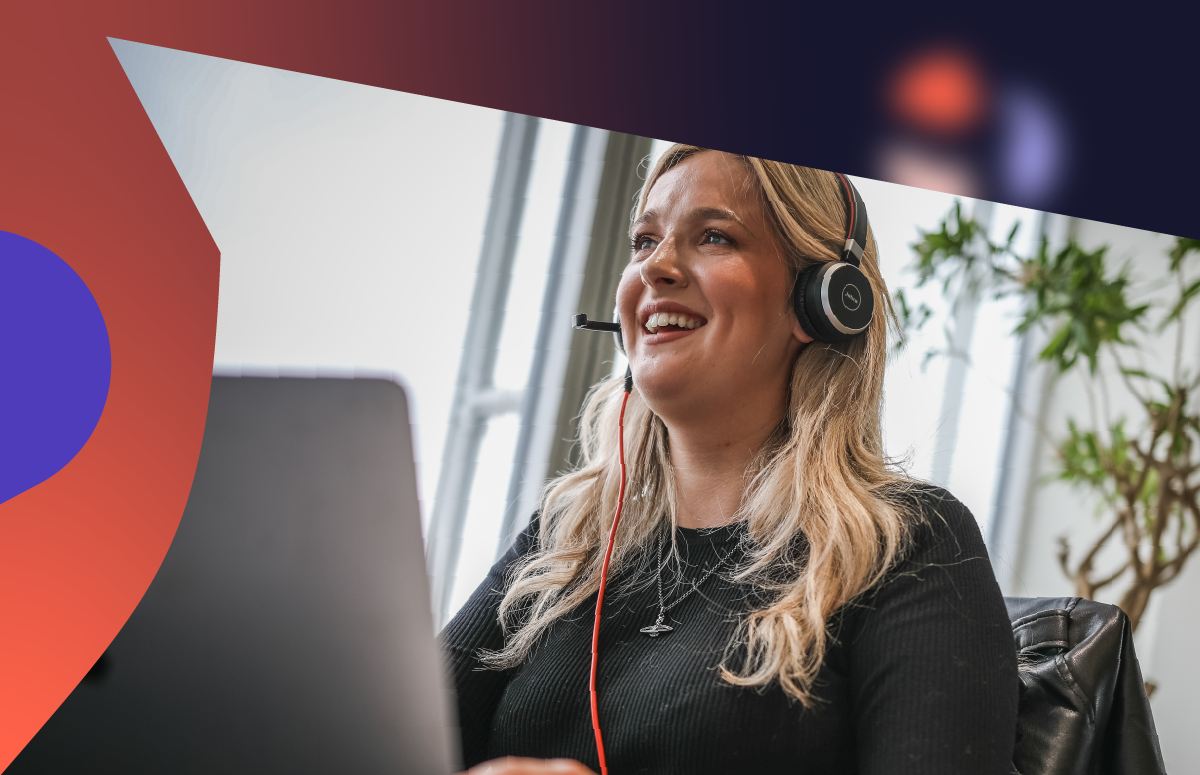
Experience the Diamond difference.
See how our phone verified contact data can increase your connect rate by 3x. Book a demo today.
Skyrocket your sales
Cognism gives you access to a global database and a wealth of data points with numbers that result in a live conversation.
Find customers ready to buy
Cognism intent data helps you identify accounts actively searching for your product or service – and target key decision makers when they’re ready to buy.

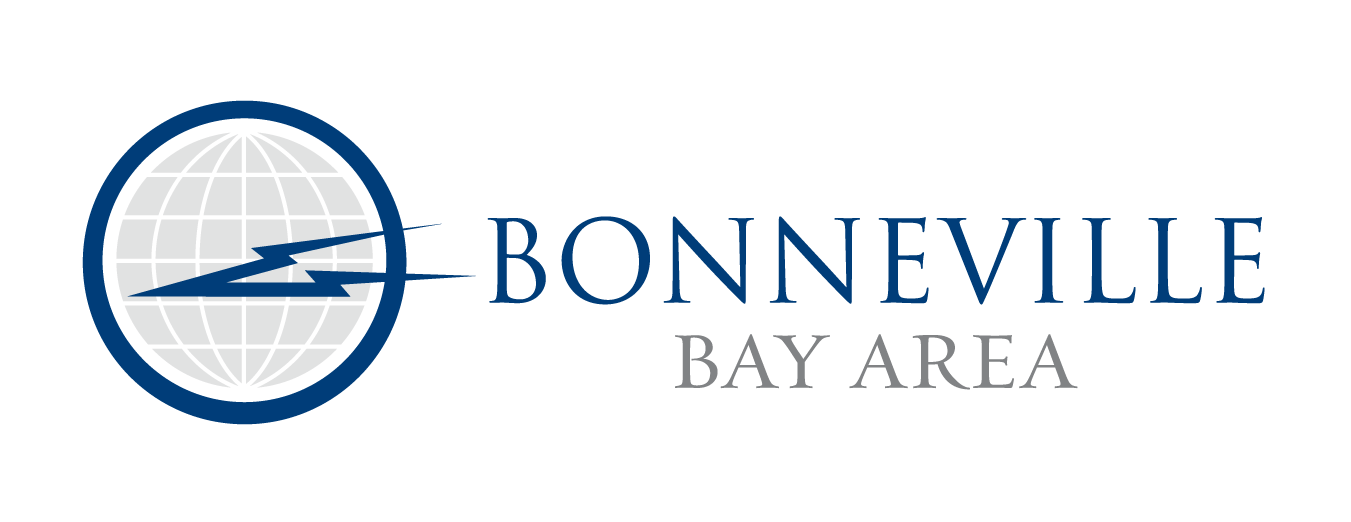
- Radio Advertising
- Local Influencers
- Digital Marketing
- Event Sponsorships
- Diversity Reach
- Case Studies

Bay Area Marketing & Advertising Blog
- Bay Area Research & Trends
- Marketing Strategy & Tactics
Do You Know Your Customer's Buying Journey? 8 Questions to Find Out
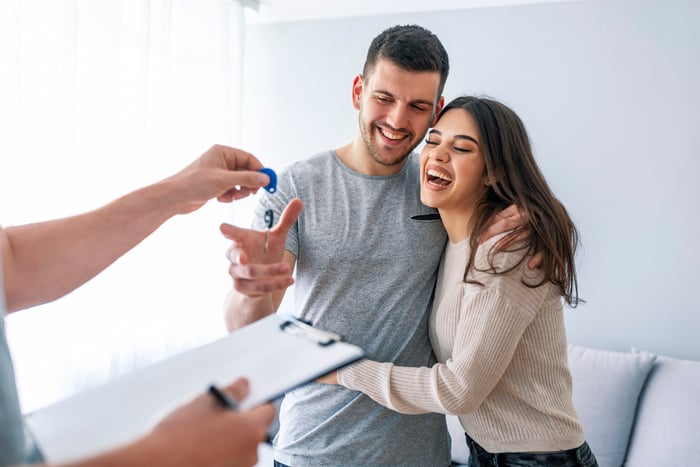
From thinking about a product or service, to potentially buying something in the future, to ultimately making a purchase can take time... It might take weeks, months, or even longer to consider an upgrade, what new features are available, researching reviews, and comparing products and prices before consumers actually complete a purchase. Consumers go through this process every time they make a purchase, and understanding where they are in the buyer's journey can help marketers to better understand their customers and how to speak to them at each stage.
The Stages of the Buyer’s Journey
The Awareness Stage A buyer realizes they have a problem or a need. They are starting research to figure out how best to solve their problem or fulfill their needs.
The Consideration Stage A buyer has clearly defined their problem and is now comparing and looking at various options that can help to solve or fulfill their need.
The Decision Stage A buyer narrows down their options and is ready to make a purchase, but is now making a decision on what company they’ll be purchasing from.
8 Questions to Learn More About Your Customer's Buying Journey
1. what problems do your products or services solve for your customers.
Purchase decisions are made to solve problems or fulfill a consumer need, such as running out of shampoo, not having a pair of shoes for a formal event, or needing a new computer because it keeps shutting off unexpectedly. Understanding the reason your target audience is in the market for your product or service is the first step to effective marketing.
2. Do you know their pain points?
Once you understand your customers' pain points, you can speak directly to them, with relevant information that can help them solve their problem. A lot of assumptions can be made about target audiences, but it is also essential for you to be more methodical in finding this information. Monitoring your website traffic, doing research on your industry, conducting surveys with current clients or working with a media partner will better help you to identify true consumer challenges and pain points. Once you have a clearer picture of your customers’ pains points you can then frame your marketing messages so that they resonate with your target audience.
3. What media is your target audience consuming?
The better you know your target audience, the better you will be at reaching them with the right messaging on the right media channels. From traditional media like TV, radio, and print to more digital related advertising on desktop, mobile, and various social platforms, it’s key to have a good understanding of where your target audience is and how to best reach them on that platform. You’ll want to hone in on the media your target audience consumes in order to better reach them. Understanding the right media mix will help produce the best possible return on investment. Working with the right media partner can help you to identify your target audience and their habits. When you learn about your target audience's browsing and listening habits, it can help you determine the best days and times that ads will be seen or heard.
4. How do you determine if a potential customer has moved from the Awareness Stage to the Consideration Stage?
The buyer’s journey can take one day to months (or even years!) depending on each consumer's needs for differing products and services. While some decisions, like where to eat tonight, can be made quickly, consumers rarely make impulse buys on larger purchases like new cars or home improvement projects. When you start seeing online audience behavior turn to actions like reading reviews, visiting various website pages, or having repeat visits to your website it’s a good sign that the consumer has moved to the consideration stage and is more closely examining your brand as an option. Advertising to consumers at this stage should focus on content, benefits to the consumer, key differentiating factors of your brand, and price point. This type of messaging will help demonstrate to the buyer how your business is a better choice compared to competitors.
5. How well do consumers know your product/service?
Advertising messages should also be different based on your target audience's current understanding of your brand. New companies need to get the word out about their products and services, and might focus more on brand awareness with informative and educational messaging.However, more established companies who already have a strong brand presence or a large existing audience may use messaging that provide incentives, information about promotions or sales, or updated information around new or featured products or services. It’s important to know that no matter how long your business has been around, having a media mix that touches all stages of the buyer’s journey is equally important.
6. How do you know when a consumer has moved from the Consideration Stage to the Decision Stage?
When consumers are close to making a decision, they tend to rely on feedback from other consumers. Success stories, positive reviews, and other testimonials can help highlight the benefits of choosing your brand. This human element utilized in advertising creative can help to convince a customer that is ready to make a purchase that yours will most benefit them. If you’ve been marketing to the right consumers, with the right messaging throughout the buyer’s journey, you have an advantage to influence their purchase decision.
7. How do you keep a consumer loyal to your brand after a purchase?
Marketing doesn’t end after a consumer makes a purchase. Most businesses want to create a loyal customer who continues to buy their products and services multiple times. During the purchase process you need to make sure you are providing excellent customer service, by having a website that is easy to navigate, with easy ways to learn about, access pricing, and/or purchase different products and services.Some best practices for creating loyal customers include capturing buyers’ information and offering member services with regular communication, updates on new products and services, and promoting sales and discounts. Consistent advertising to your target audience that includes existing customers is another proven way to ensure you stay top-of-mind with existing customers and don’t lose them to the competition. Keep your focus on addressing problems your customers currently have and showing them how you can solve them to maintain your credibility and trust.
8. What kind of marketing messaging can help solidify a decision for potential customers?
When you understand your potential customers’ buying journey and therefore know how to speak to them, you have an advantage in influencing their purchase decisions. Many audiences are turned off by advertisements that simply tell them to buy a product without appealing to their emotions and showing them why the product will benefit them. Being aware of what they need can help you create messaging that tells a story they can relate to, which can be a game-changer when it comes time to make a purchase decision.
Reaching Your Target Audience During Their Journey
Understanding who your customer is, their pain points, and where they are in the buyer’s journey, is the first step to creating marketing that will build lasting, loyal customers. Showing consumers how a product can solve their problem, fit into their life, or enhance their quality of life shows them that you understand them and their needs. Next time you start the creative process for your advertising, consider going through these questions first. It’s important to make sure that you are speaking to your target audience in a way that will meet them where they are at in the buyer’s journey.
Working with a media partner, like our team at Bonneville Bay Area, can be helpful in making sure that your ads are tailored to the right audience and where they are at in their buyer’s journey.
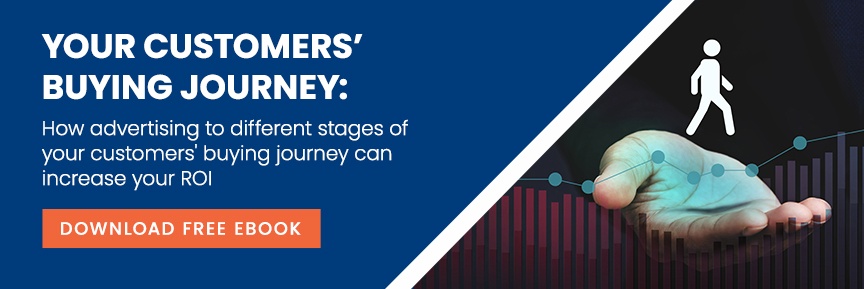
Jennifer Ravenscroft
Topics: Bay Area Research & Trends , Marketing Strategy & Tactics
Lists by Topic
- Weekly Roundup (107)
- Marketing Strategy & Tactics (72)
- Digital Marketing (56)
- Radio Advertising (30)
- Strategic Planning (29)
- Marketing ROI (19)
- Local Influencers (11)
- COVID-19 Strategy (10)
- Bay Area Market (6)
- Bay Area Research & Trends (4)
- Industry- Education (4)
- Industry- Financial (4)
- Social Media (4)
- Branding (3)
- Customer Needs (3)
- Diversity (3)
- Industry- Home Improvement Services (3)
- Marketing Creative (3)
- Recruitment Marketing (3)
- multicultural (3)
- Community Partnerships (2)
- Holiday (2)
- Programmatic Advertising (2)
- Video Marketing (2)
- Bonneville News & Updates (1)
- Content Development and Production (1)
- Customer Journey (1)
- Industry- Health (1)

Subscribe and Get The Latest News
Recent posts, weekly roundup: the latest in google ad news.
Welcome to our Weekly Roundup, where we delve into the dynamic world of Google Ads to bring you the freshest updates, insights, and trends shaping the digital advertising landscape. In this edition, we'll explore the latest features, strategies, and industry developments that can empower businesses and marketers to maximize their advertising efforts on the world's most prominent search engine platform. From algorithm tweaks to innovative ad formats, join us as we navigate through the ever-evolving realm of Google Ads with articles straight from the source.
- Sarah Burkhart
- April, 5, 2024
Weekly Roundup: How To Successfully Market Your Home Improvement Business In 2024
In the ever-evolving realm of home improvement, staying ahead of the curve is crucial for businesses looking to thrive. As we embrace the challenges and opportunities of 2024, the landscape of marketing for home improvement ventures has shifted significantly. Gone are the days of relying solely on traditional methods; today, success lies in harnessing the power of innovation and adapting to the latest trends. Whether you're a seasoned contractor or a budding entrepreneur, understanding the intricacies of modern marketing techniques is paramount to carving out your niche in this competitive industry. Join us as we delve into the strategies, tools, and tactics that will elevate your home improvement business to new heights in 2024 with articles from around the web.
- March, 29, 2024
Weekly Roundup: More Info On The Latest Advertising Trends
This week's exploration of the ever-evolving advertising landscape, we dive into the latest trends shaping consumer engagement and brand strategies. From innovative approaches to ad sound to emerging streaming trends, businesses are constantly adapting to capture audience attention in an increasingly competitive digital sphere. Join us as we uncover the cutting-edge tactics driving advertising success and explore how brands can stay ahead in this dynamic environment. Keep reading to stay informed on the latest advertising trends and insights.
- March, 22, 2024
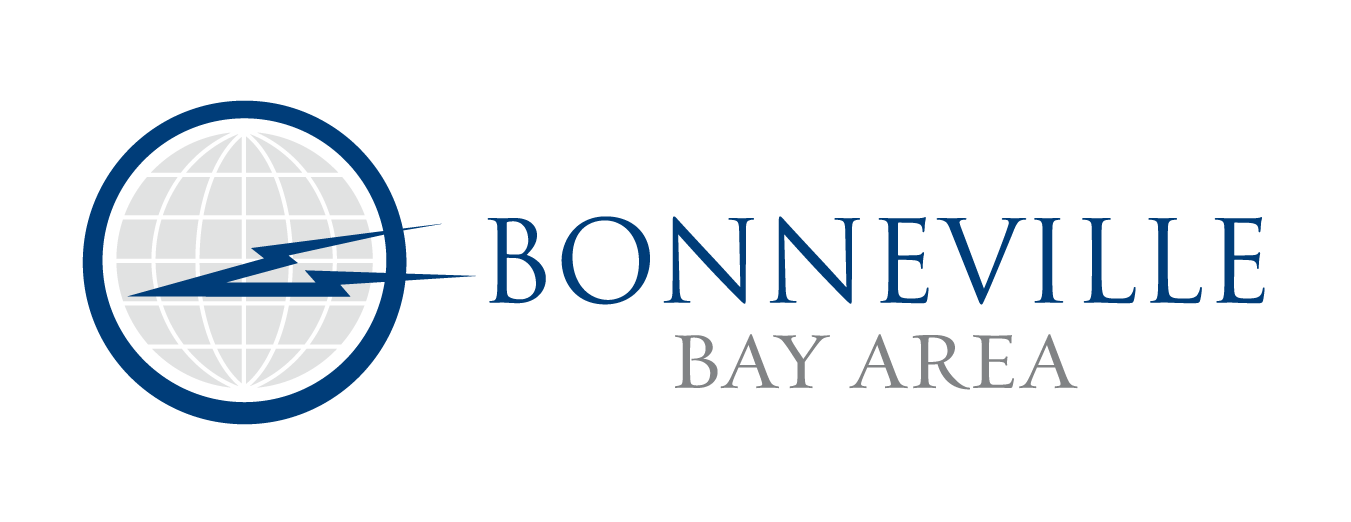
Bonneville Bay Area offers integrated marketing solutions that connect businesses with the right local audience enabling brand awareness, activation in the local community, and overall business growth.
Marketing Solutions
- Digital Advertising
© Copyright 2020
Root out friction in every digital experience, super-charge conversion rates, and optimize digital self-service
Uncover insights from any interaction, deliver AI-powered agent coaching, and reduce cost to serve
Increase revenue and loyalty with real-time insights and recommendations delivered to teams on the ground
Know how your people feel and empower managers to improve employee engagement, productivity, and retention
Take action in the moments that matter most along the employee journey and drive bottom line growth
Whatever they’re are saying, wherever they’re saying it, know exactly what’s going on with your people
Get faster, richer insights with qual and quant tools that make powerful market research available to everyone
Run concept tests, pricing studies, prototyping + more with fast, powerful studies designed by UX research experts
Track your brand performance 24/7 and act quickly to respond to opportunities and challenges in your market
Explore the platform powering Experience Management
- Free Account
- For Digital
- For Customer Care
- For Human Resources
- For Researchers
- Financial Services
- All Industries
Popular Use Cases
- Customer Experience
- Employee Experience
- Employee Exit Interviews
- Net Promoter Score
- Voice of Customer
- Customer Success Hub
- Product Documentation
- Training & Certification
- XM Institute
- Popular Resources
- Customer Stories
- Market Research
- Artificial Intelligence
- Partnerships
- Marketplace
The annual gathering of the experience leaders at the world’s iconic brands building breakthrough business results, live in Salt Lake City.
- English/AU & NZ
- Español/Europa
- Español/América Latina
- Português Brasileiro
- REQUEST DEMO
- Experience Management
- Buyer's Journey
See how XM for Customer Frontlines works
Optimizing the buyer’s journey.
16 min read What are the different buyer’s journey stages? And how can you optimize all your potential solutions, from the awareness stage through to the decision stage? Here’s everything you need to know…
What is the buyer’s journey?
Whenever you buy something – whether it’s a big lifestyle purchase like a car, something for your business like a software suite, or even a fast-moving, disposable consumer product like a coffee – you never do so without having gone on what we call the buyer’s journey .
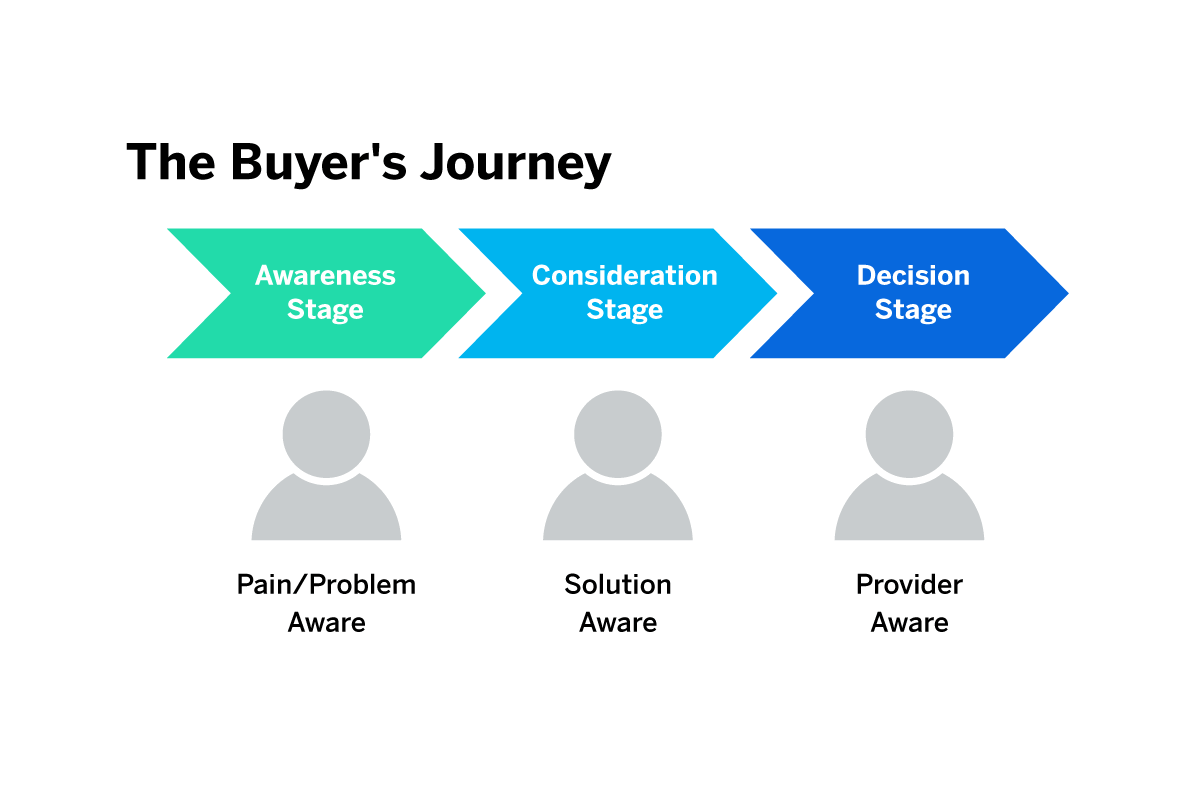
That journey may or may not be a conscious one, but either way, the particular cup of coffee you end up with, from a particular store, is the result of a bunch of external and internal factors all working to move you along a route – a route that ends with your buying decision.
Free Course: Understand and map the customer journey like never before
In other words? The various buyer’s journey stages describe the path along which people move towards making a purchase.
Buyer journey vs customer journey
Buyer’s journey and customer journey seem like incredibly similar terms, but there’s a big difference between the two, and they each require distinct focus:
The buyer’s journey describes the steps that lead up to a purchase decision but stops right there.
That means it’s all about persuasion and influence aimed at brand new customers. The customer journey, on the other hand, follows on from this, referring to the steps businesses can take to build relationships with existing customers.
In practice, that means adopting a focus on things like customer support and customer experience , as well as using existing customer data to create content marketing strategies that influence repeat decisions, recommendations, and customer loyalty.
In super simple terms, the buyer’s journey is all about saying “our product is great, you should give it a try,” while the customer journey is more about saying “remember that great experience you had with us? We’ve got more for you!”
Buyer’s journey stages vs the sales funnel
Similarly, the buyer’s journey is a different concept from the sales funnel. That’s because the former is all about a customer’s intent to purchase generally, while the latter relates only to their intent to purchase from you. Because of this, the traditional funnel typically has more steps, since you can track things specific to your organization – like leads and negotiations.
Buyer’s journey stages: How many steps are there?
As with all good journeys, the buyer’s journey has a defined beginning, middle, and end. It’s universally broken out into three stages: the consideration stage, the awareness stage, and the decision stage.
Let’s explore how this works…
How does the buyer’s journey work?
So how do those buyer’s journey stages actually flow? While they’re all slightly different depending on things like industry, target audience, and product type, some commonalities run through every single buying process.
Here’s what every stage of the buyer’s journey looks like:
1. Awareness stage | Buyer’s journey
This is the first stage of the buyer’s journey, and it often gets mixed up. In the sales funnel, awareness refers to a customer becoming aware that your company exists. In the buyer’s journey, however, things are slightly different. Here, the awareness stage really means that they have become aware of a pain point.
In a B2B environment , that might be that they’ve discovered their business is losing precious time and resource on an internal sales process that they think could be streamlined. In a B2C environment, perhaps they realize that their home-office chair makes their back hurt.
At this point, they won’t be exploring clear solutions, but rather they’ll be doing general research or asking around about the issue, intending to understand its scope better.
In the awareness stage, the buyer is aware of a problem:
“I have an issue with [X], I wonder if there’s something I can do about it.”
2. Consideration stage | Buyer’s journey
The consideration stage sees the customer move from basic research toward building a list of possible solutions. So from your point of view as a business, this stage is about showing how you can help resolve consideration stage buyers’ pain points in a way that builds confidence in the quality and competitiveness of your offering.
Using the examples described above, the prospective B2B customer has determined that either a better internal sales process software suite, or a package of training is the answer they need, and will use this stage to compare and contrast different options. The B2C customer has determined that they need either a new office chair or a standing desk solution.
In the consideration stage, the buyer is aware of possible solutions:
“One of these options will fix my problem.”
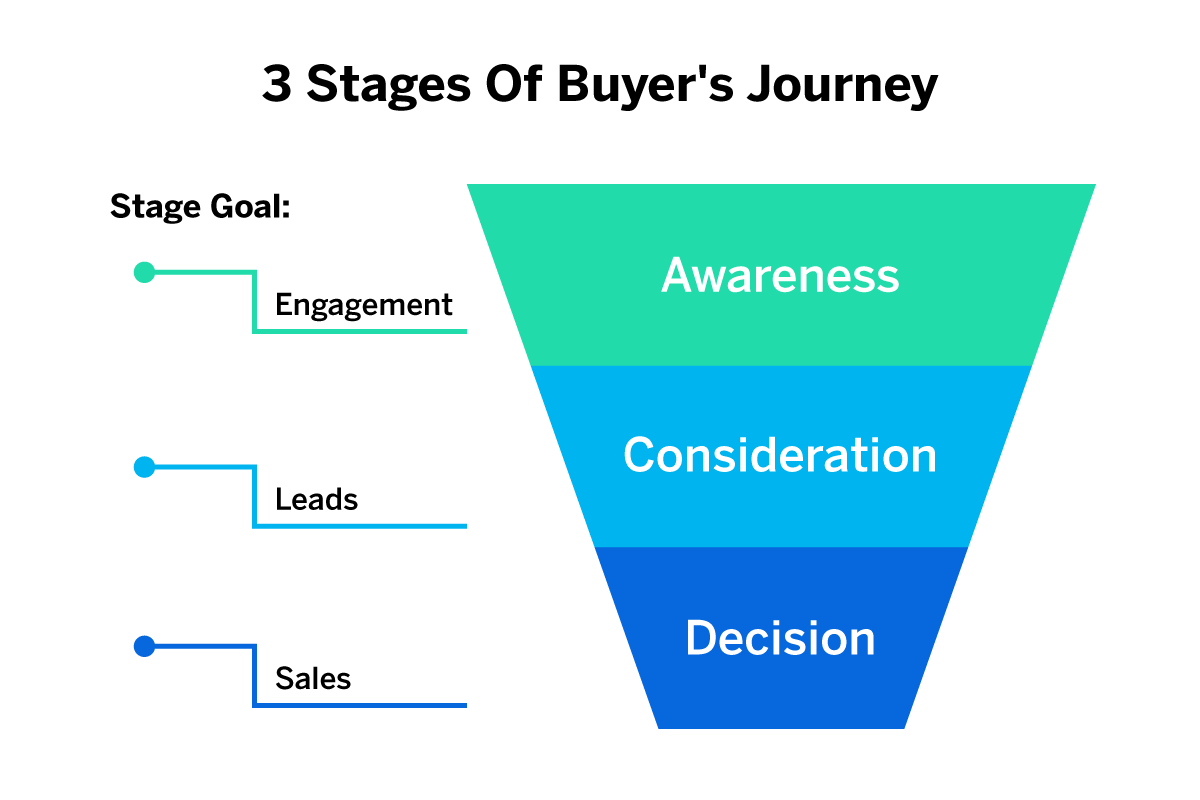
3. Decision stage | Buyer’s journey
At the decision stage, your potential customers will be making decisions on which products or services will work best for them. So, while the consideration stage was about building out solutions, here they’ve picked a solution and are now narrowing down actual products or services.
Again, with the examples above, the decision stage will see the B2B customer comparing sales process software pricing and reviews, while the B2C customer has a shortlist of new chairs to choose from.
A host of things ultimately affect their final decision, from price, features, and competitiveness, to reviews from others and overall brand reputation.
In the decision stage, the buyer is aware of providers and products:
“I’m either going to purchase [X] or [Y], depending on which one seems better.”
B2B vs B2C buyer journey
It’s worth keeping in mind that the buyer’s journey relies on different factors depending on whether you’re in a B2B or B2C market.
In the B2C market, potential buyers are usually individuals or families, with specific needs particular to themselves. So they might be most concerned with convenience, or their financial ability to buy your products or services.
That means relationships might be formed over a shorter period, resulting in sales and outbound/inbound marketing targeted at a very broad customer base via market segments or through buyer persona work.
In the B2B market, we think of the concept of a customer a little differently. Often there are up to ten stakeholders – from the executive buyer to the end-user – with varying interests, concerns, and goals. A B2B purchase decision is often carefully considered and scrutinized, with long-term use in mind, so relationships are sometimes formed over a longer period.
As such, your relationship will be built with more than just the final decision maker – it’s the connection you foster with all stakeholders that will make or break a sale.
Why should businesses care about the buyer’s journey?
Understanding the buyer’s journey is how you can insert your business and products as the solution to your customer’s needs at every step of the process. It’s an opportunity to be an obvious solution, even when customers aren’t even sure they need one yet.
Seizing those opportunities relies on outbound/inbound marketing efforts that land your messaging in different ways, for different times. If you can track the buyer’s journey against audience personas, you’ll be able to uncover unique needs and meet them with information that isn’t one-size-fits-all.
Some 96% of website traffic occurs during the first couple of phases of the journey before decision-making begins, and in the B2B space especially, people spend up to 90% of the decision journey educating themselves.
So it stands to reason that businesses can massively benefit by broadening their marketing and outreach efforts to include material that caters to people not yet at the decision-making part of the process.
For instance, relevant content marketing can be more powerful than advertising, if it hits at the right part of the journey. 80% of B2B decision-makers , for instance, prefer to get their information from a series of articles than from an advert.
Being able to provide that collateral is what will edge your business out ahead of your competitors.
Buyer Journey optimization
Analyst firm IDC famously once described the buyer’s journey as follows:
“The buyer journey is nothing more than a series of questions that must be answered.”
And if the buyer is asking questions – consciously or subconsciously – it’s your job as a business to be able to provide answers at every step of the journey. In practice, that means optimizing your marketing and advertising and looking to create content so that everything together can tell a customer, in no uncertain terms, that you’re the best solution.
It might seem initially complicated and time-consuming to split your marketing, advertising, website, social, sales strategy, and content strategy up into three chunks like this, but your potential customers will be interacting with your brand at each stage of the buyer’s journey (whether they realize it or not), and don’t necessarily want to be put off by stumbling onto something that attempts to force them into a sale.
Understanding that it’s a journey – and that you can be there at each step with something useful and relevant – is the key to success. Here’s how:
Buyer’s journey: Optimizing the awareness stage
In the awareness stage, the last thing people want is a pitch from sales reps or advertisement-heavy content. Instead, they need information that answers broader questions around their issue.
If we take the B2C example above of someone suffering from back pain while working from home, they might Google ‘is sitting all day bad for you?’ or something similar. As marketers and business owners, we need to create content that answers that question, without it being overtly advertorial.
In that sense, the awareness stage can be optimized by providing rich, SEO-friendly, relevant content around the broad-strokes topics your category frequently deals in. In this example, that might be a series of articles around the evolution of the home office, a video on best practices when working from home, and/or a webinar on home working ergonomics.
In social, that might also mean performing social listening to find people Tweeting or posting about their issue, and responding with links to helpful information – not necessarily that your business owns. Why? Well, because simply being helped is enough to form a positive association with your brand in their minds.
When it comes to advertising and more traditional marketing here, you’ll want to be very top line. Buyers in the awareness stage are more receptive to brand messaging and brand identity content, than “here’s a product you’ll love” messaging.
Buyer’s journey: Optimizing the consideration stage
During the consideration stage, we need to get personal. That means conducting market research to develop personas and using historical operational data to find out how each buyer persona can best be served.
If, for instance, people are coming to your site with a specific problem during the consideration stage, you can design the information and resources across your site to better funnel them towards a specific solution, without it seeming like a race to the checkout basket. Think about the omnichannel steps each persona uses on their buying journey, and meet them there.
That might mean using paid search ads against specific keyword terms or designing information flows that educate on the way towards decision-making. The balance is in creating educational pages, posts, and resources that fully convey your solution as one of many, without it feeling like a pitch from a sales team.
When it comes to consideration stage content, case studies are a great way to tick that box, as they help put your prospective customer in the shoes of a real person who has had a similar problem to them.
Buyer’s journey: Optimizing the decision stage
In the optimization stage, we can get right to the point. Here, you need to be sure your product or service messaging is crystal clear in terms of benefit, features, and price – especially as to how it compares to your competitors.
This is a great stage to leverage third-party reviews; if you know your company has had praise on sites like TrustPilot, that should be integrated into your website. If you have customers that you know are loyal and satisfied, post testimonials from social media or CSAT or NPS surveys .
This is also where a B2B lead generation strategy comes in. If you provide gated assets or collect information from any other means, formalize a process by which your sales team can contact these leads and offer to show them how your product works and what it can do for them.
You need to be able to create content across every touchpoint – website, social media, in-store, on the phone – that creates a compelling package and leaves potential customers in no doubt that your product will solve all their problems and then some.
Buyer’s journey: Making customers feel understood
Whether you’re looking at the buying journey, the customer journey, or a funnel that generates leads, the most important thing is to ensure that prospective and existing customers feel listened to and understood.
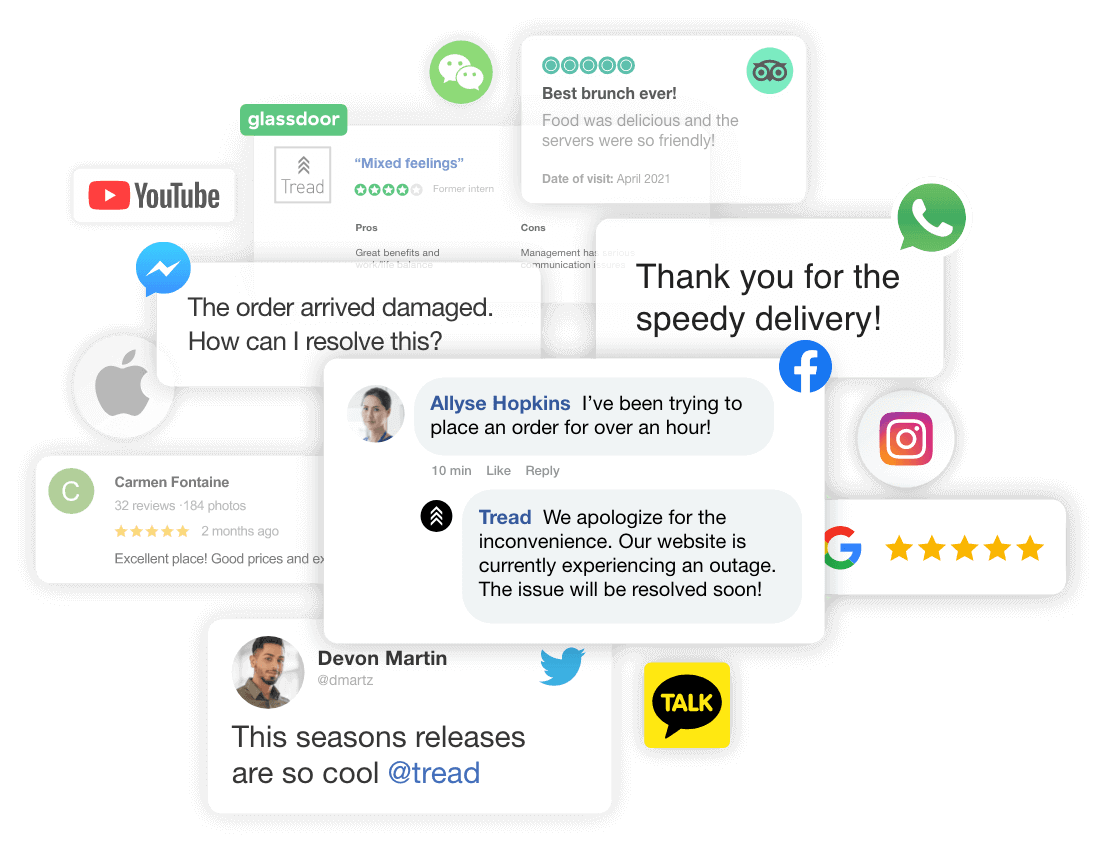
With today’s customers preferring to interact with brands on a multitude of channels, as well as to self-teach and zig-zag around different information sources, the best way to make them feel understood is twofold:
1. Perform a thorough journey mapping audit
2. implement a comprehensive experience management suite.
It’s only when you can listen to everything customers say (online, in-app, or on the phone) alongside data that shows audience and persona behavior that you’ll be able to make meaningful actions that strengthen your brand’s offering.
How to map the B2B buyer journey
Get that right and you’ll be able to retain customers, foster brand loyalty, and decrease churn.
How Qualtrics can help
The Qualtrics Experience Management Platform™ is built to enable that powerful workflow, bringing real-time and historic data together to proactively suggest actions and changes that can help influence purchasing journeys on an individual basis, no matter the stage. Click here to learn more .
Understand and Map the Customer Journey Like Never Before
Related resources
Customer Journey
Customer Journey Analytics 13 min read
How to create a customer journey map 22 min read, b2b customer journey 13 min read, customer interactions 11 min read, consumer decision journey 14 min read, customer journey orchestration 12 min read, customer journey management 14 min read, request demo.
Ready to learn more about Qualtrics?
Customer Journey Maps: How to Create Really Good Ones [Examples + Template]
Updated: April 17, 2024
Published: May 04, 2023
Did you know 70% of online shoppers abandoned their carts in 2022? Why would someone spend time adding products to their cart just to fall off the customer journey map at the last second?

The thing is — understanding your customer base can be very challenging. Even when you think you’ve got a good read on them, the journey from awareness to purchase for each customer will always be unpredictable, at least to some level.

While it isn’t possible to predict every experience with 100% accuracy, customer journey mapping is a convenient tool for keeping track of critical milestones that every customer hits. In this post, I’ll explain everything you need to know about customer journey mapping — what it is, how to create one, and best practices.
Table of Contents
What is the customer journey?
What is a customer journey map, benefits of customer journey mapping, customer journey stages.
- What’s included in a customer journey map?
The Customer Journey Mapping Process
Steps for creating a customer journey map.
- Types of Customer Journey Maps
Customer Journey Mapping Best Practices
- Customer Journey Design
- Customer Journey Map Examples
Free Customer Journey Map Templates
.webp)
Free Customer Journey Template
Outline your company's customer journey and experience with these 7 free templates.
- Buyer's Journey Template
- Future State Template
- Day-in-the-Life Template
You're all set!
Click this link to access this resource at any time.
The customer journey is the series of interactions a customer has with a brand, product, or business as they become aware of a pain point and make a purchase decision. While the buyer’s journey refers to the general process of arriving at a purchase, the customer journey refers to a buyer's purchasing experience with a specific company or service.
Customer Journey vs. Buyer Journey
Many businesses that I’ve worked with were confused about the differences between the customer’s journey and the buyer’s journey. The buyer’s journey is the entire buying experience from pre-purchase to post-purchase. It covers the path from customer awareness to becoming a product or service user.
In other words, buyers don’t wake up and decide to buy on a whim. They go through a process of considering, evaluating, and purchasing a new product or service.
The customer journey refers to your brand’s place within the buyer’s journey. These are the customer touchpoints where you will meet your customers as they go through the stages of the buyer’s journey. When you create a customer journey map, you’re taking control of every touchpoint at every stage of the journey instead of leaving it up to chance.
For example, at HubSpot, our customer’s journey is divided into three stages — pre-purchase/sales, onboarding/migration, and normal use/renewal.

1. Use customer journey map templates.
Why make a customer journey map from scratch when you can use a template? Save yourself some time by downloading HubSpot’s free customer journey map templates .
This has templates that map out a buyer’s journey, a day in your customer’s life, lead nurturing, and more.
These templates can help sales, marketing, and customer support teams learn more about your company’s buyer persona. This will improve your product and customer experience.
2. Set clear objectives for the map.
Before you dive into your customer journey map, you need to ask yourself why you’re creating one in the first place.
What goals are you directing this map towards? Who is it for? What experience is it based upon?
If you don’t have one, I recommend creating a buyer persona . This persona is a fictitious customer with all the demographics and psychographics of your average customer. This persona reminds you to direct every aspect of your customer journey map toward the right audience.
3. Profile your personas and define their goals.
Next, you should conduct research. This is where it helps to have customer journey analytics ready.
Don’t have them? No worries. You can check out HubSpot’s Customer Journey Analytics tool to get started.
Questionnaires and user testing are great ways to obtain valuable customer feedback. The important thing is to only contact actual customers or prospects.
You want feedback from people interested in purchasing your products and services who have either interacted with your company or plan to do so.
Some examples of good questions to ask are:
- How did you hear about our company?
- What first attracted you to our website?
- What are the goals you want to achieve with our company? In other words, what problems are you trying to solve?
- How long have you/do you typically spend on our website?
- Have you ever made a purchase with us? If so, what was your deciding factor?
- Have you ever interacted with our website to make a purchase but decided not to? If so, what led you to this decision?
- On a scale of 1 to 10, how easily can you navigate our website?
- Did you ever require customer support? If so, how helpful was it, on a scale of 1 to 10?
- Can we further support you to make your process easier?
You can use this buyer persona tool to fill in the details you procure from customer feedback.
4. Highlight your target customer personas.
Once you’ve learned about the customer personas that interact with your business, I recommend narrowing your focus to one or two.
Remember, a customer journey map tracks the experience of a customer taking a particular path with your company. If you group too many personas into one journey, your map won’t accurately reflect that experience.
When creating your first map, it’s best to pick your most common customer persona and consider the route they would typically take when engaging with your business for the first time.
You can use a marketing dashboard to compare each and determine the best fit for your journey map. Don’t worry about the ones you leave out, as you can always go back and create a new map specific to those customer types.
5. List out all touchpoints.
Begin by listing the touchpoints on your website.
What is a touchpoint in a customer journey map?
A touchpoint in a customer journey map is an instance where your customer can form an opinion of your business. You can find touchpoints in places where your business comes in direct contact with a potential or existing customer.
For example, if I were to view a display ad, interact with an employee, reach a 404 error, or leave a Google review, all of those interactions would be considered a customer touchpoint.
Your brand exists beyond your website and marketing materials, so you must consider the different types of touchpoints in your customer journey map. These touchpoints can help uncover opportunities for improvement in the buying journey.
Based on your research, you should have a list of all the touchpoints your customers are currently using and the ones you believe they should be using if there’s no overlap.
This is essential in creating a customer journey map because it provides insight into your customers’ actions.
For instance, if they use fewer touchpoints than expected, does this mean they’re quickly getting turned away and leaving your site early? If they are using more than expected, does this mean your website is complicated and requires several steps to reach an end goal?
Whatever the case, understanding touchpoints help you understand the ease or difficulties of the customer journey.
Aside from your website, you must also look at how your customers might find you online. These channels might include:
- Social channels.
- Email marketing.
- Third-party review sites or mentions.
Run a quick Google search of your brand to see all the pages that mention you. Verify these by checking your Google Analytics to see where your traffic is coming from. Whittle your list down to those touchpoints that are the most common and will be most likely to see an action associated with it.
At HubSpot, we hosted workshops where employees from all over the company highlighted instances where our product, service, or brand impacted a customer. Those moments were recorded and logged as touchpoints. This showed us multiple areas of our customer journey where our communication was inconsistent.
The proof is in the pudding — you can see us literally mapping these touch points out with sticky notes in the image below.

Don't forget to share this post!
Related articles.
![buying journey questions How AI Image Misuse Made a World of Miscommunication [Willy's Chocolate Experience]](https://blog.hubspot.com/hubfs/ai%20image%20misuse%20the%20willy%20wonka%20experience%20%281%29.png)
How AI Image Misuse Made a World of Miscommunication [Willy's Chocolate Experience]

7 Ways to Delight Your Customers This Holiday Season

14 Customer Experience Fails that Companies Can Learn From
![buying journey questions How Customer Experience Has Evolved Over the Last Decade [+ 2024 Trends]](https://blog.hubspot.com/hubfs/future-of-customer-experience.png)
How Customer Experience Has Evolved Over the Last Decade [+ 2024 Trends]
![buying journey questions Memorable Examples of AR in Customer Experience [+Tips for Implementing the Technology]](https://blog.hubspot.com/hubfs/augmented%20reality%20customer%20experience.png)
Memorable Examples of AR in Customer Experience [+Tips for Implementing the Technology]

Digital Customer Experience: The Ultimate Guide for 2023
![buying journey questions How to Implement a Hybrid Customer Service Strategy That Works [Expert Tips]](https://blog.hubspot.com/hubfs/hybrid%20customer%20service_featured.png)
How to Implement a Hybrid Customer Service Strategy That Works [Expert Tips]

User Flows: 8 Tips For Creating A Super Smooth User Experience

11 Best Practices for B2B Customer Experience
![buying journey questions Customer Experience vs. User Experience: What’s the Difference? [+ Examples]](https://blog.hubspot.com/hubfs/customer-experience-vs-user-experience_2.webp)
Customer Experience vs. User Experience: What’s the Difference? [+ Examples]
Outline your company's customer journey and experience with these 7 free customer journey map templates.
Service Hub provides everything you need to delight and retain customers while supporting the success of your whole front office
- Share full article
For more audio journalism and storytelling, download New York Times Audio , a new iOS app available for news subscribers.

- April 26, 2024 • 21:50 Harvey Weinstein Conviction Thrown Out
- April 25, 2024 • 40:33 The Crackdown on Student Protesters
- April 24, 2024 • 32:18 Is $60 Billion Enough to Save Ukraine?
- April 23, 2024 • 30:30 A Salacious Conspiracy or Just 34 Pieces of Paper?
- April 22, 2024 • 24:30 The Evolving Danger of the New Bird Flu
- April 19, 2024 • 30:42 The Supreme Court Takes Up Homelessness
- April 18, 2024 • 30:07 The Opening Days of Trump’s First Criminal Trial
- April 17, 2024 • 24:52 Are ‘Forever Chemicals’ a Forever Problem?
- April 16, 2024 • 29:29 A.I.’s Original Sin
- April 15, 2024 • 24:07 Iran’s Unprecedented Attack on Israel
- April 14, 2024 • 46:17 The Sunday Read: ‘What I Saw Working at The National Enquirer During Donald Trump’s Rise’
- April 12, 2024 • 34:23 How One Family Lost $900,000 in a Timeshare Scam
Harvey Weinstein Conviction Thrown Out
New york’s highest appeals court has overturned the movie producer’s 2020 conviction for sex crimes, which was a landmark in the #metoo movement..
Hosted by Katrin Bennhold
Featuring Jodi Kantor
Produced by Nina Feldman , Rikki Novetsky and Carlos Prieto
Edited by M.J. Davis Lin and Liz O. Baylen
Original music by Dan Powell and Elisheba Ittoop
Engineered by Chris Wood
Listen and follow The Daily Apple Podcasts | Spotify | Amazon Music
When the Hollywood producer Harvey Weinstein was convicted of sex crimes four years ago, it was celebrated as a watershed moment for the #MeToo movement. Yesterday, New York’s highest court of appeals overturned that conviction.
Jodi Kantor, one of the reporters who broke the story of the abuse allegations against Mr. Weinstein in 2017, explains what this ruling means for him and for #MeToo.
On today’s episode

Jodi Kantor , an investigative reporter for The New York Times.

Background reading
The verdict against Harvey Weinstein was overturned by the New York Court of Appeals.
Here’s why the conviction was fragile from the start .
There are a lot of ways to listen to The Daily. Here’s how.
We aim to make transcripts available the next workday after an episode’s publication. You can find them at the top of the page.
The Daily is made by Rachel Quester, Lynsea Garrison, Clare Toeniskoetter, Paige Cowett, Michael Simon Johnson, Brad Fisher, Chris Wood, Jessica Cheung, Stella Tan, Alexandra Leigh Young, Lisa Chow, Eric Krupke, Marc Georges, Luke Vander Ploeg, M.J. Davis Lin, Dan Powell, Sydney Harper, Mike Benoist, Liz O. Baylen, Asthaa Chaturvedi, Rachelle Bonja, Diana Nguyen, Marion Lozano, Corey Schreppel, Rob Szypko, Elisheba Ittoop, Mooj Zadie, Patricia Willens, Rowan Niemisto, Jody Becker, Rikki Novetsky, John Ketchum, Nina Feldman, Will Reid, Carlos Prieto, Ben Calhoun, Susan Lee, Lexie Diao, Mary Wilson, Alex Stern, Dan Farrell, Sophia Lanman, Shannon Lin, Diane Wong, Devon Taylor, Alyssa Moxley, Summer Thomad, Olivia Natt, Daniel Ramirez and Brendan Klinkenberg.
Our theme music is by Jim Brunberg and Ben Landsverk of Wonderly. Special thanks to Sam Dolnick, Paula Szuchman, Lisa Tobin, Larissa Anderson, Julia Simon, Sofia Milan, Mahima Chablani, Elizabeth Davis-Moorer, Jeffrey Miranda, Renan Borelli, Maddy Masiello, Isabella Anderson and Nina Lassam.
Katrin Bennhold is the Berlin bureau chief. A former Nieman fellow at Harvard University, she previously reported from London and Paris, covering a range of topics from the rise of populism to gender. More about Katrin Bennhold
Jodi Kantor is a Pulitzer Prize-winning investigative reporter and co-author of “She Said,” which recounts how she and Megan Twohey broke the story of sexual abuse allegations against Harvey Weinstein, helping to ignite the #MeToo movement. Instagram • More about Jodi Kantor
Advertisement

IMAGES
VIDEO
COMMENTS
1. Dig Into What Your Buyers Do During the Awareness Stage. The end goal for your prospects at this point in their journey is to research the symptoms they're having and actually attribute a name to their problem. You should brainstorm the following points: How buyers describe goals and challenges.
The buyer's journey describes a buyer's path to purchase. In other words, buyers don't wake up and decide to buy on a whim. They go through a process to become aware of, consider and evaluate, and decide to purchase a new product or service. By understanding the buyer's journey, the pains and problems they experience along that journey, and the ...
This journey is typically segmented into three stages: awareness, consideration, and decision. Don't assume, however, that every buyer steps through those three stages in 1-2-3 order every time. Buyers' journeys often wind up taking very non-linear paths. We'll get into that below.
The purchase journey is the process customers go through when they decide to buy something. It includes realizing a need, looking at options, making a choice, buying the item, and thinking about the experience after the purchase. Businesses study this journey to understand how to help customers at each step and improve their experience.
Definition, stages, and examples. January 4, 2024. 5. ( 1) Step into the realm where choices weave the intricate fabric of consumer decisions — the buyer journey. As we navigate this landscape, we'll uncover the definition, stages of such a journey, and real-world examples that demystify the process. Join us on this expedition — no fluff ...
Don't rush through this step. Once you have a good handle on what role your content can play, map each piece of content to the corresponding stage of the buyer's journey. 7. Create new content to fill in the gaps. Now that you know where your existing content fits into the buyer's journey, identify any gaps.
Provide support, resources, project management, and even help them with communications around the transition. Analyze. Improve. Repeat. These 15 questions will help you critique and improve your own buyer's journey. The best strategy is to answer them yourself once and then go through the buyer's journey in real-time and answer them again.
The purpose of understanding the buyer's journey is to create content for each stage. Let's look at how to do that. Step 1. Create buyer persona (s) A buyer persona is a "fictional person" you create who represents the common characteristics of your customer.
Here's what every stage of the buyer's journey looks like: 1. Awareness stage | Buyer's journey. This is the first stage of the buyer's journey, and it often gets mixed up. In the sales funnel, awareness refers to a customer becoming aware that your company exists. In the buyer's journey, however, things are slightly different.
As mentioned earlier, the buyer journey goes through the customer awareness, consideration, and decision stages. Let's take a look at what each means and review it with an example afterward: 1. The Awareness Stage: The discovery of a specific problem or need. Here, the buyer is wondering about the problem to solve: they want to know more ...
The buyer's journey is just a small piece of the overall customer life cycle. When you have information for people at any stage of the buying journey, you're able to provide a positive ...
The most well-known iteration of the buyer's journey is a three-stage map: The awareness stage. The buyer is actively looking for ways to address the problem they've identified. The consideration stage. The buyer has enough information about available solutions to think about making a decision. The decision stage.
The sales rep-prospect relationship cuts both ways — as your prospects qualify you, you need to qualify them back. You have to be prepared to meet them at every stage of the buyer's journey and frame yourself as a knowledgeable, reliable, trustworthy resource. That starts with asking the right questions at the right time.
A Buyer's Journey Should Serve as a Blueprint. It helps you to understand what information a customer is looking for at each stage in the process, maximizing your touchpoints, and building stronger relationships. Not only can this help you make more sales, but it can lead to higher-value sales and more repeat business.
Stages, Examples, and More. The buyer's journey is the process potential customers go through to decide to buy a product or service. Although there are usually similarities, every buyer's journey is different and can take many twists and turns. It's imperative to develop an online marketing strategy that includes creating compelling ...
Create a B2B buying journey that drives more profitable purchase decisions. Our research reveals that 75% of B2B buyers prefer a rep-free sales experience. But self-service digital purchases are far more likely to result in purchase regret. Sales and marketing must be able to identify the right mix of digital and human interaction to drive ...
2. Social Media Post. Social media is a channel that can be used to promote your other content, and you can also create content specifically for the channel. According to Pew Research, 72% of the public uses some form of social media, so your audience is likely native to this channel.
You sell to teams, not individuals. A B2B buyer's journey is unique in that, a B2B customer is often more than a single customer. In B2B, you're selling to an entire team or group of people, all of whom might have input in the purchase decision. According to a study, 79% of B2B buyers said there are 1-6 people involved in the purchase process.
The Awareness Stage. A buyer realizes they have a problem or a need. They are starting research to figure out how best to solve their problem or fulfill their needs. The Consideration Stage. A buyer has clearly defined their problem and is now comparing and looking at various options that can help to solve or fulfill their need.
Here's what every stage of the buyer's journey looks like: 1. Awareness stage | Buyer's journey. This is the first stage of the buyer's journey, and it often gets mixed up. In the sales funnel, awareness refers to a customer becoming aware that your company exists. In the buyer's journey, however, things are slightly different.
2. Survey customers to understand their buying journey. What you think you know about the customer experience and what they actually experience can be very different. Speak to your customers directly to get an accurate snapshot of their journey. 3. Ask customer service reps about the questions they receive most frequently.
In essence, the buyer journey is a subset of the broader customer journey and consists of three stages; awareness, consideration, and decision-making. Remember, every buyer starts as a customer, but not all become loyal advocates. Therefore, catering to both journeys creates seamless customer experiences that attract, convert, and retain buyers.
Harvey Weinstein Conviction Thrown Out New York's highest appeals court has overturned the movie producer's 2020 conviction for sex crimes, which was a landmark in the #MeToo movement.